





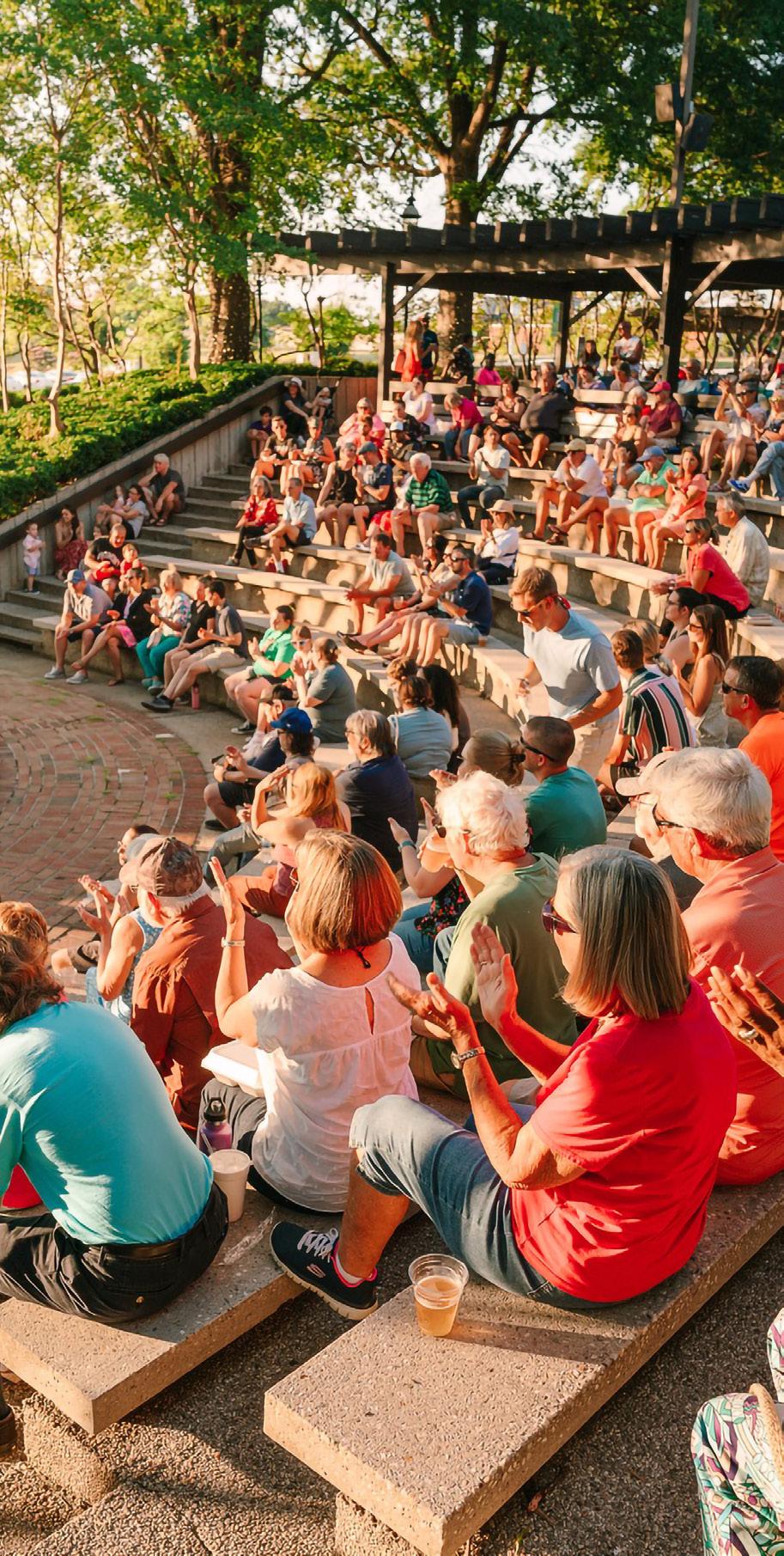
PREPARED BY THE HARWOOD INSTITUTE FOR PUBLIC INNOVATION IN PARTNERSHIP WITH IMPACT ALAMANCE BY RICHARD C. HARWOOD AND JOHN P. CONROY

The Harwood Institute for Public Innovation
4915 St. Elmo Avenue, Suite 402 Bethesda, MD 20814
phone 301-656-3669
fax 301-656-0533
email info@theharwoodinstitute.org
web theharwoodinstitute.org
The Harwood Institute for Public Innovation is a nonprofit, nonpartisan organization that equips people, organizations, communities, and networks with the tools to bridge divides, build capacity, and tackle shared challenges. The Harwood Institute’s work is rooted in a philosophy of Civic Faith and the practice of Turning Outward. Founded in 1988, the Institute’s approach has spread to all 50 states across the U.S. and 40 countries around the world.
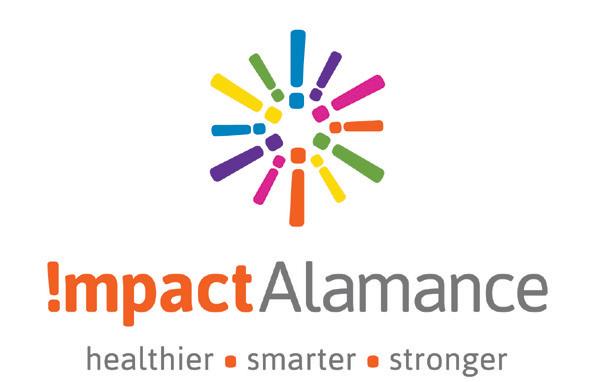
Impact Alamance
133 E. Davis St. Burlington, NC 27215
phone 336-221-0011
email impactalamance@conehealth.com
web impactalamance.com
Impact Alamance is a community health foundation created from the merger of Alamance Regional and Cone Health.
Impact Alamance works to create healthy environments and build healthy communities by investing in collective, long-term, measurable change. We serve as a hub in the community, sparking new partnerships and linking people together in a county-wide effort to reach shared goals. Each year, the foundation invests around $3 million into Alamance County communities through numerous partnerships, initiatives and investments aimed at making Alamance County healthier, smarter and stronger. We believe in putting our values into action, and that by working together, we can build a healthier, better prepared, more just, and prosperous future for us all.
Alamance Choosing Hope: A New Path Forward for the Community was prepared by The Harwood Institute for Public Innovation in partnership with Impact Alamance.
Written by Richard C. Harwood and John P. Conroy
Research by John P. Conroy, Maritza Coscarelli, Marla Crockett, Ava Fenelus, Geoffrey Fenelus and David Seleb with assistance from Julia Cipollone and Britta Vaughan
Community engagement led by Jewel Tillman, Taylor Russ and Tracey Grayzer with support from Laura Fehlhafer and Marcy Green
Edited by Ashley Asti and Tristan Wood
Design by Dresden Branding & Design
Photography by Alamance-Burlington School System, Alamance County Visitors Bureau, Alamance Parks, Burlington Downtown Corporation, Burlington Sock Puppets, City of Burlington, City of Graham, City of Graham Recreation and Parks Department (photographer Brandy McCandless), City of Mebane, CityGate Dream Center, Graham Terhune, Heather Blackerby, Impact Alamance, Mayco D. Bigelow Community Center at North Park (photographers Happy Labs Photography and 29th & 11th Photography), Shayna Prace, Tandra Wilkerson, Tony Crider, Town of Elon, Town of Haw River, and Vy Nguyen
No part of this report may be reproduced in any form or by electronic or mechanical means, including storage and retrieval systems, without written permission from the copyright owners.

At Impact Alamance, we’ve learned that we need each other for our whole community to thrive. Collaboration is so important to us, it’s part of our mission statement: We partner and invest to achieve hope, health and prosperity for everyone in Alamance County.
We believe that everyone should be able to live healthy and fulfilling lives—no matter their race, gender, or economic status. This is the time for us to join together and stand up for all of Alamance County to work hand in hand to create a healthier, smarter and stronger place to live for everyone who calls this county home.
We’ve worked with The Harwood Institute for Public Innovation to learn all we can about Alamance County. We’ve gone to every corner of the county to hear from people about their hopes, what they love about our community, where we’re missing the mark, and where there are opportunities to create meaningful change. There are real differences in Alamance— differences across race, geography, and how long people have lived here, among others. Yet, when you dig a little deeper, you’ll see that many of us are saying the same things and what we want for our future is more alike than you might realize.
We chose The Harwood Institute for Public Innovation due to its success
in communities like ours across the country. The Institute is an independent, nonpartisan organization that equips people, organizations, networks and communities with the tools they need to bridge divides, develop a culture of shared accountability, build local capacity, and tackle shared challenges. The information you’ll find in this report is a starting point for action. The Harwood Institute isn’t a consulting firm—they don’t prescribe answers or impose solutions. Instead, they’ll help us build our capacity to develop a stronger civic culture where WE build our future together.
We hope that you’ll read this report with that in mind. Reflect on what you’re reading and think about what sparks hope and where you might be able to work with others in our community to build a path forward.
Listening to each other, learning, and building bridges to strengthen our community is more important now than ever. It’s the way to find common ground, celebrate our humanity, and join together so that Alamance County flourishes. Together we are stronger.
Yours in service,
 Tracey Grayzer President, Impact Alamance
Tracey Grayzer President, Impact Alamance
We often think that communities live at the whim of outside forces. No doubt, such forces do impact the course of communities. But all communities also have a choice. In the case of Alamance County, the community has so many positives and much going for it, but a real choice remains—a choice between a path of the status quo, which is driven by division, competing forces, mistrust and fear, or an alternative path of possibility and hope.
Listen to the voices of Alamance County in this report. When you do, what becomes clear is that, notwithstanding real differences, people are yearning to put the community on a new path.
But the people of Alamance must make an active choice to make this new path a reality. This report doesn’t prescribe specific solutions to meet particular challenges; instead, it seeks to illuminate a new path forward centered on creating community conditions that enable people—all people, from all parts of the county—to bridge divides, generate shared purpose, and discover ways to move forward together.
During my more than thirty years of doing this work, I have seen what it takes for communities to move forward: enough people must make the
intentional choice to step forward, turn outward toward one another, and set in motion meaningful actions that spread throughout a community like a positive contagion. Developing new initiatives and programs cannot be their sole focus; they must create the fertile environment from which they can grow by building the civic strength and culture of their community.
Forging the future of Alamance
County means doing more than simply celebrating—or bemoaning—the community’s growth. People must show up and work together to shape the community’s future. Rather than making national news for disharmony, Alamance County can become an inspiring example of how meaningful progress can be made in our country. Alamance can forge a story of how very different people—with very different histories, perspectives, and lived experiences— can come together for the betterment of everyone.
Now is the time to step forward. Now is the time to choose hope.
 Richard C. Harwood President and Founder
Richard C. Harwood President and Founder
In late 2021, Impact Alamance began discussions with The Harwood Institute for Public Innovation about how to strengthen the community of Alamance County. In early 2023, the Institute, with the support of Impact Alamance, will hold a Public Innovators Lab for community leaders and residents who wish to develop new ways to bring people together to solve local challenges and strengthen how the community works together.
Before undertaking the Lab and other activities that will support new ways of working in the community, Impact Alamance asked the Institute to help them learn more about the community and identify strengths to build on moving forward. This report, Alamance Choosing Hope, presents what we found. To be clear, the report is not intended to be a scorecard on the community; nor does it prescribe specific solutions for moving forward. Instead, it is intended for the community to better understand how people across the county see and experience life in Alamance, and key areas for strengthening the civic culture so the community can come together to determine how best to move forward.
Over a four-month period, The Harwood Institute undertook a series of conversations with community residents from 12 different areas across Alamance County. Each conversation was held with cross-sections of approximately 12 people; one of these was held in Spanish. There were four additional conversations to delve deeper into issues that were surfacing from the initial conversations; one was conducted with pastors, one with young adults, another with an additional group of Spanish-speakers, and a final conversation with people who could not make a previous conversation but wanted to participate.
In addition, The Harwood Institute conducted 36 in-depth interviews with community leaders, which included elected officials and leaders from nonprofits, education, religious institutions, businesses, and other areas. There is one additional point to be made about how the report was done: each individual quote was selected only if it represented larger patterns found in the research. The selected quotes come from across all of The Harwood Institute’s interviews and conversations.
This section provides an overview of the report, and in it we outline four main themes that emerged from the conversations and interviews in Alamance County.
This section lays out key steps for how Alamance County can catalyze and grow efforts that build trust and a sense of possibility and hope.
In this section, you will hear people in Alamance County describe how they see and experience the community and share their hopes and concerns about the future.
This section is a snapshot and analysis of the fundamental structures, networks, and norms of Alamance County through the lens of The Harwood Institute’s Public Capital Framework. This snapshot reflects what it takes for a community to work together effectively; it was developed through the Institute’s research and on-the-ground work in communities in all 50 U.S. states.
This section lays out key recommendations for Alamance County to invest in and develop its civic capabilities.
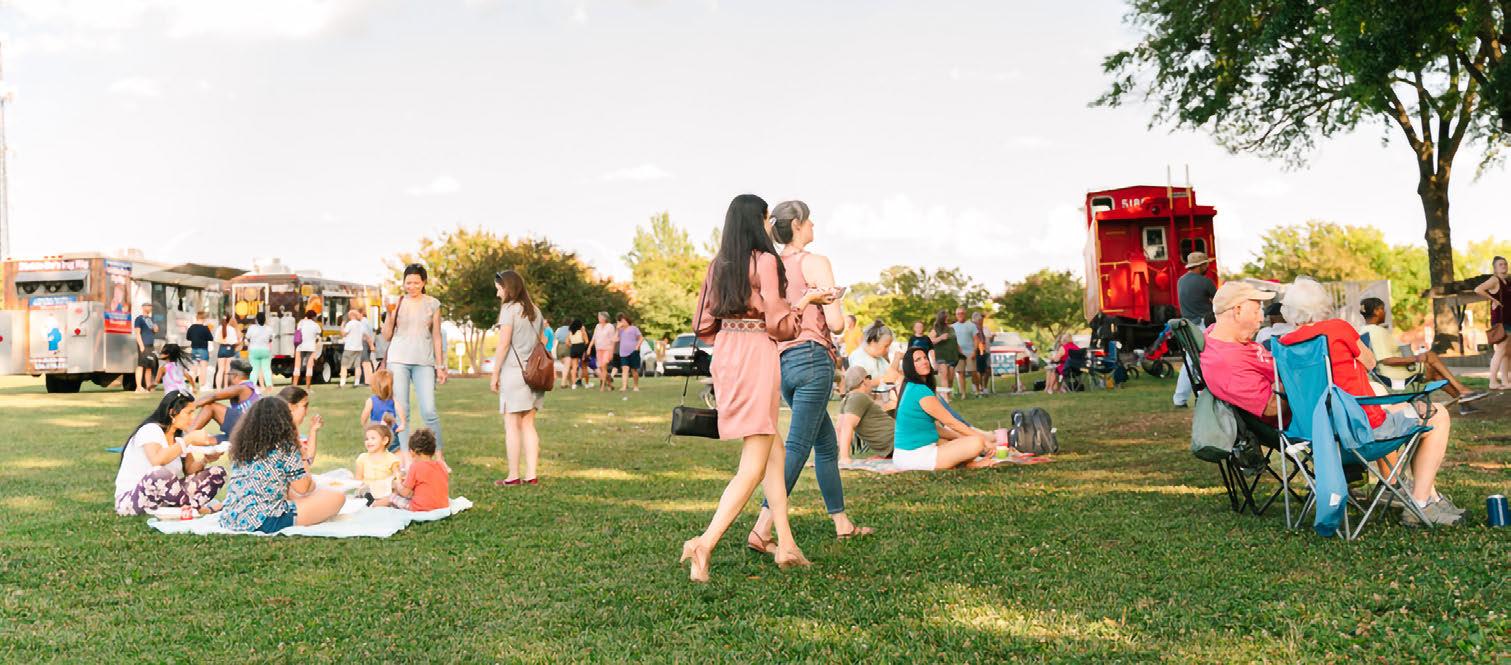
There is so much good about Alamance. So many people cherish living in their local community, with their neighbors and friends. So much goodness lives within the people here: individuals from all parts of the county share countless stories of people helping each other in times of need. There is a rich and ever-evolving history to the towns and communities of Alamance. And, though you may not always see it at first glance, there is a yearning among many people to figure out how to move the community forward together.
But nothing is automatic. The divides existing in Alamance County are potent, the forces at work run deep, and fear is prevalent. These challenges are real. And they are happening while Alamance experiences rapid growth and changes. From 2010 to 2020, the county grew by 13.4%, putting it in the top 10% of fastest-growing counties in the country. Even more growth and changes are expected in the years ahead. What are the implications of existing growth and the growth to come? What things do people cherish about Alamance now that they don’t want to lose? And how does Alamance deal with the current challenges people are already facing in their lives and in the community?
There is a yearning among many people to figure out how to move the community forward together.
Alamance County confronts a fundamental choice—it can be overrun by divisions, competing forces and fear, or it can find new ways to build bridges and forge its own future. Not all communities face such a clear choice; Alamance does.
One resident expressed a sentiment that we heard repeatedly across the county, saying Alamance is like “A Tale of Two Cities —it is the best of times and the worst of times.” Some people are flourishing economically, while others are falling further behind. Some people feel safe, while others feel in danger. Some places are embracing rapid growth, while others are resisting it. Some people feel seen and heard, while others feel nearly invisible.
When asked for a motto of what outsiders might call Alamance, one resident referenced the persistent negative stories people tell about the county, and suggested a motto of “No Chance Alamance.” While a narrative of lack of progress pervades the county, there are many positive things happening in Alamance. Some efforts, both formal and informal, are taking real steps to authentically engage people and make progress.
Community centers, churches and schools serve as hubs for engagement in all pockets of the county. Many rural residents connect with fellow neighbors and parents at volunteer fire stations and various clubs. The Chamber of Commerce brings leaders together from across Alamance to ensure the local economy continues to grow. Alamance Forward, a partnership between LatinxEd, Alamance Achieves, and CityGate Dream Center, identifies barriers and opportunities to success for underrepresented students and families. The Health Equity Collective (HEC) works to ensure productive dialogue on issues of race and place, and is partnering with the local hospital and Health Department on the Community Health Assessment and the corresponding Community Health Improvement Plan (CHIP).
Alamance will need to face up to the fullness of the realities people are experiencing, and activate its imagination to forge a more hopeful path for all residents, from each and every part of the county.
These engagement efforts, along with other efforts across the county, should be recognized and used as foundations for action. To grow these positive efforts, to bridge divides, to harness the progress that is taking place, Alamance will need to face up to the fullness of the realities people are experiencing, and activate its imagination to forge a more hopeful path for all residents, from each and every part of the county.
This report contains insights and findings from voices across the county—residents and leaders; rural and urban; young and old; Black, Brown, and White; and a cross-section of age, income, education, and party affiliation. These findings are not meant to be definitive, or to close off conversation. Instead, this report is meant to spark further discussion and,
importantly, action. There are four overarching themes that emerged from these interviews and conversations:
– Real divides hold the community back. There is a collection of deep divides that run throughout Alamance County and shape people’s daily lives and experiences—including growth, old vs. new residents, where you live, law enforcement, and race and racism. Alamance faces the dangerous choice of allowing these divides to grow wider, or bridging them to create new opportunities for the county.
– Mistrust is rampant. There is deep mistrust of many elected officials and other leaders. There is mistrust between and among people. And there is mistrust that genuine action
People are longing for a sense of healing and hope.
will be taken on people’s concerns. This lack of trust—and the fear that accompanies it—undermines people’s belief that they can come together to get things done.
– Civic capacities must be grown. Throughout this report, you’ll read about how Alamance County must build its civic capacities—its leaders, networks, norms for interaction, and sense of shared purposes, among others—in order to take effective, sustained action.
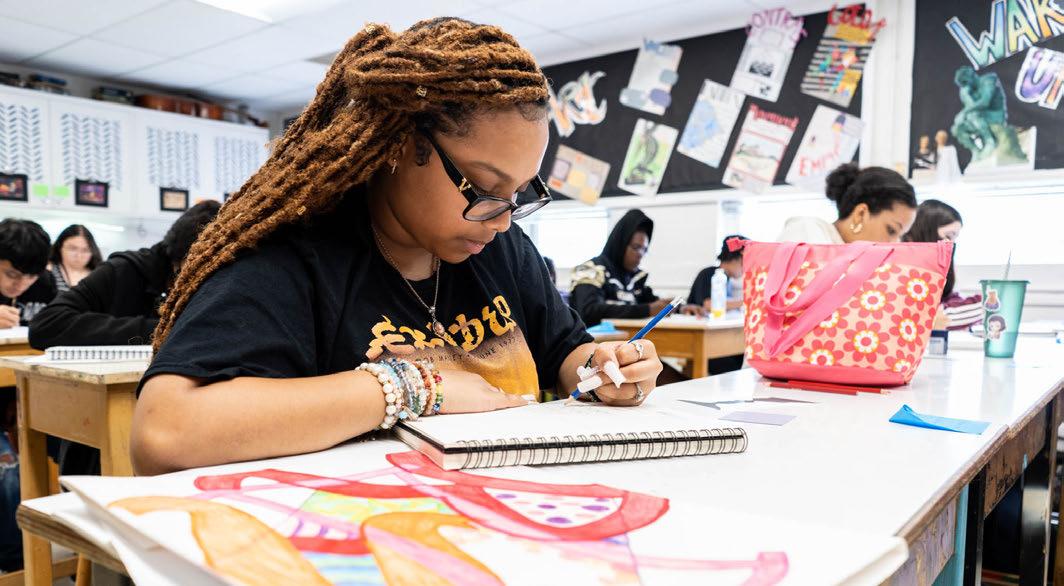
– People want healing and hope. Many people are exhausted and disappointed that more progress is not being made. This is not to say that they have preset ideas on what must be done; it’s that they are longing for a sense of healing and hope. They want to come together in genuine ways, sort through different challenges, and find potential paths moving forward.
Alamance County has the opportunity to shape its own future—building on the good things already happening, and addressing people’s existing concerns. But real, concerted action is needed to turn this opportunity into a reality.
– How does this community build on the good things that are happening?
– How can it ensure that all people are included and that people do not get left out or left behind?
– What will it take to strengthen the civic capacities of the community to catalyze and support more progress?
– How can action be taken by honoring the past and seizing the current opportunity for healing and hope?
In one of our conversations, a resident said about the challenges at hand: “The solutions are right here in the community.” This report reveals that
in order to generate more of these solutions, the community will need to commit itself to come together and work in new ways.
Let’s be clear. There are risks that go along with maintaining the path of the status quo. Divides in Alamance County will grow, while the forces at work go unaddressed and mistrust spreads. Or a different path can be taken. This alternate path will require people to step forward, see and hear one another, and find new ways to build together. Alamance County can choose a path of possibility and hope. But the people of Alamance must make an active choice to make this path their reality.
Over the past thirty years, The Harwood Institute has learned that it’s at this very juncture that people must face reality if they are to create something different.
And yet, too often, those seeking positive change reflexively embrace old habits. We choose a path of comprehensive, highly coordinated plans, where we attempt to bring as many people and groups together as possible. But such efforts often stall out, or fail outright, due to the unwillingness or plain inability of so many groups to work together. What’s more, too many community efforts ignore, or do not truly know, what the community actually

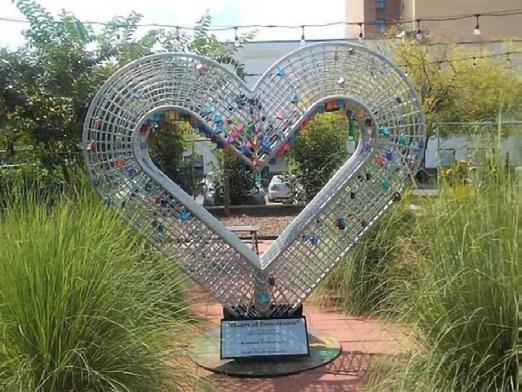
wants. We gravitate toward a one-sizefits-all approach, often imported from a different community with a different history and needs. Solutions end up imposed upon communities, leaving change undelivered and people feeling that they’ve lost control over their own lives and futures. There is a failure to understand and account for the community’s context.
At the root of such approaches is an assumption that communities need to be “fixed”—as if people and communities are seeking to have someone fix them. As if the persistent challenges reflected in this report can somehow be easily solved.
Communities move forward and thrive by growing themselves. They unleash a chain reaction that begins with single steps and expands over time. Such actions, when they are strategic, address the community’s divides and honor people’s shared aspirations. They are designed with the explicit intention
to strengthen the community’s civic culture: the relationships, norms, leaders, organizations, and networks that enable a community to work. Taken together, these expanding steps strengthen the community’s civic confidence and belief in itself. Indeed, as communities grow themselves, a sense of possibility and hope grows, too.
Such hope is not based on wishful thinking; nor is it a false hope, made up of unrealistic expectations or utopian visions. What is needed is authentic hope—a hope built upon realistic promises and concrete actions taken over time, and emerging over time.
“No Chance Alamance” is just an imagined slogan. What if a more positive one were actually created, one rooted in the reality of a more hopeful path? Alamance County has that chance—the opportunity to forge a better future for all of its residents. It’s time to choose a new path of hope.
Communities that are highly divided must find ways to create a new trajectory for hope, with growing momentum and ever-expanding civic confidence. Action must be taken on specific concerns while, simultaneously, strengthening civic culture to foster an environment where people, organizations, and leaders work together. Then, it is possible to unleash a chain reaction of actions and ripple effects that grows over time and spreads like a positive contagion. Through these actions, a new sense of shared purpose emerges.
Communities that are highly divided must find ways to create a new trajectory for hope, with growing momentum and everexpanding civic confidence.
To make this happen, renewing a genuine sense of possibility and hope is essential, and coming together to take actionable, doable, and achievable steps is critical. This doesn’t mean that laying out large visions is not important, or that there is any substitute for pushing hard; but it does suggest how sustainable change can happen. Here are seven key steps for Alamance County to create and sustain change by getting on a more hopeful path.
1. Build bridges with the willing and be open to new contributors. Trust is in very short supply in Alamance County; fear is prevalent. People stay close to those they know and those with whom they feel most comfortable. To take effective action, and strengthen the civic culture, people will need to build bridges across existing dividing lines; this effort should start with those who are ready and willing to engage, and then grow through a series of intentional steps from there. At each turn, people must be open to discovering new partners and contributors who want to be a part of moving Alamance forward.
2. Create real conversations that include all voices. There are various conversations about the community taking place throughout Alamance County, but far too many of them are acrimonious and divisive and fail to include different
voices and perspectives. Alamance County must create and discover new ways to discuss difficult issues, work through different perspectives, and reach agreements on how to move forward. This is not about reaching “consensus,” where everyone agrees; it is about finding those places where just enough agreement exists to move forward together. To build trust and forge new bonds, these conversations must be inclusive.
3. Focus on areas that are ripe for making progress. When communities are divided, they often seek to solve the most intractable problems through big, comprehensive plans. At this stage, building civic confidence that progress is even a possibility is essential. Thus, efforts should focus on issues that are ripe for action, where the possibility—indeed the probability—for forward movement is high. This can include hard, critical issues—such as race and racism, disparities and inequities, and education—but the initial emphasis must be placed on creating wins. Starting too big, or taking on too much, will cause efforts to collapse under their own weight. As is noted throughout this report, there are actions already being taken in Alamance County that can—and should—serve as a foundation for making real progress.
4. Place a premium on demonstrating concrete action, however small. People in Alamance County don’t believe that real action will come after conversations and community-focused meetings. Taking real, concrete actions is a down payment on creating a new trajectory for hope. For now, such actions can be small; what matters most is that action occurs, and that additional actions grow from there. This will demand disciplined, vigilant follow-up from conversations and meetings. Silence only confirms people’s mistrust.
5. Build together. People gain trust and a sense of possibility when they come together to build things. Building together can take numerous forms: from developing and implementing new efforts to address common problems, to taking part in the arts (which can engage people’s imagination and enable them to see and articulate
People gain trust and a sense of possibility when they come together to build things.
new thoughts, emotions, and paths forward), to coming together with others to build homes, give out food, or visit shut-ins. Make no mistake: this is not about more volunteerism; it is about forging new common efforts. Nothing replaces discovering the innate capabilities of other people through action—their talents and humor, their struggles and vulnerability, and their shared humanity.
6. Make the invisible visible. Civic confidence and belief grows from people seeing that progress is possible; but far too often, the progress that is being made remains invisible to the community at large, and even to those who are helping to create the progress. Making the invisible visible is vital to enabling people to see that progress is happening—that it is truly possible. This takes making intentional efforts to identify where progress is already happening in Alamance County, and where new actions are taken, and then lifting up and spreading those stories. But beware: overstating results and glossing over challenges will undermine authenticity.
7. Be prepared for continued resistance. Making progress will not magically eliminate the divisions or acrimony or resistance to change that exists in Alamance County. In fact, making progress might even intensify these in the near term. Those who seek to come together and move Alamance forward must prepare themselves for such resistance. The work ahead is difficult and hard. Finding allies for support is imperative. Perseverance is required.
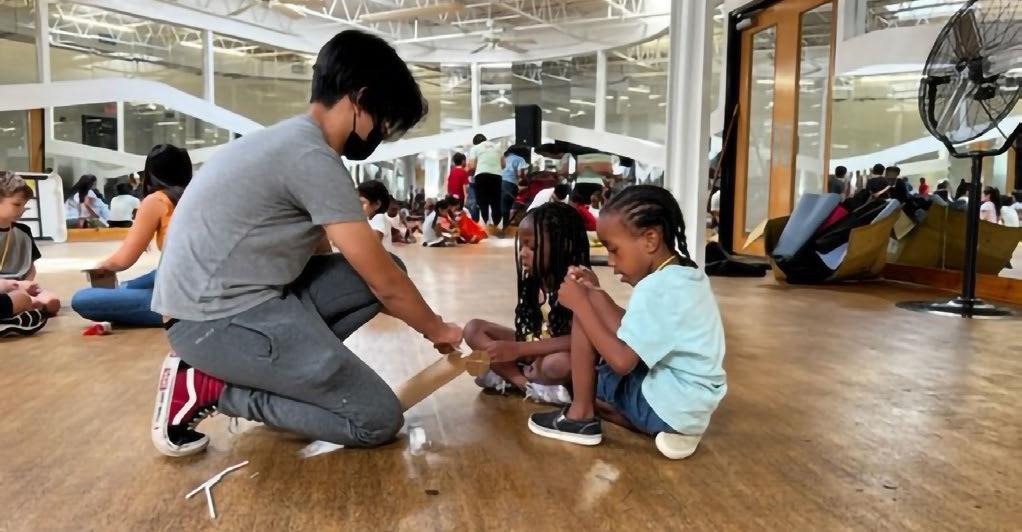
Listen to the voices of the people who make Alamance County their home. You’ll hear many people express great affection for their neighbors and the community, while also believing that Alamance faces deep divides that are holding the community back. As you listen to these voices, you can also sense a growing desire among people to come together to find new ways to build a stronger community. What follows is a series of themes that emerged from our conversations with residents and leaders from all across the county. Keep in mind that each individual quote was selected only if it represented larger patterns found in the conversations.
Virtually everyone says that Alamance County is made up of “friendly” and “giving” people. One elected official described Alamance as “main street America.” “You can’t walk a block without someone beeping a horn at you or waving out the window. You feel connected.”
A Southern Alamance resident said that “people still know each other. You’ve got small downtowns in each community and parents are still active in school and still love to sit out at football games.”
“People give back to you as long as you don’t cross the line. Cross the line, it’s a whole different ball game.”
Another resident spoke about a tornado ripping through his property: “30 trees went down and, within five minutes, there were probably 50 people with chainsaws out here, busting their butts, doing everything they can to help out. Didn’t even know each other.”
But beneath the surface of friendliness
are strong undercurrents. “There’s this really dark underbelly,” a community leader said. “People give back to you as long as you don’t cross the line. Cross the line, it’s a whole different ball game,” a resident in the Pleasant Grove/Green Level conversation said.
A Graham resident explained, “As soon as you say the wrong thing to the wrong person, whatever you were trying to do is derailed.” When conversations get difficult, a community leader told us, people are “not going to step across a divide as far as really creating a new environment. It’s all about power.”
There is concern throughout the county about a rise in extremism in recent years. This has led to a coarsening of public discourse and has “emboldened folks to be a little more raw and unfettered in showing their true feelings,” a Saxapahaw resident said. Another pointed out that in the last four or five years, more “hate groups” have emerged, where they “ride down a road with hundreds of cars, yelling racial slurs and [displaying] Confederate flags.”
People repeatedly reported that one has to watch what they say and to whom. An Elon resident who recently moved to Alamance said that after speaking with co-workers, a colleague pulled them aside and told them, “You need to be careful about what you say around certain people. They may be friendly on the outside, but be careful what you say when you go below the surface.”
At the heart of these undercurrents is a collection of issues that divides the community, causing people to separate from one another. They are powerful rifts that pull at the seams of the county’s civic fabric.
“We are right on the edge of an explosion,” a community leader said, explaining that Alamance County is indisputably experiencing rapid growth. Yet, different people have very different perspectives about the growth and the role the government should play in addressing it. Some simply don’t want more growth. An Altamahaw Ossipee resident said, “We’re in our own little space out in the middle of nowhere. I don’t want all these big subdivisions coming in.” And a Southern Alamance resident said that developments are
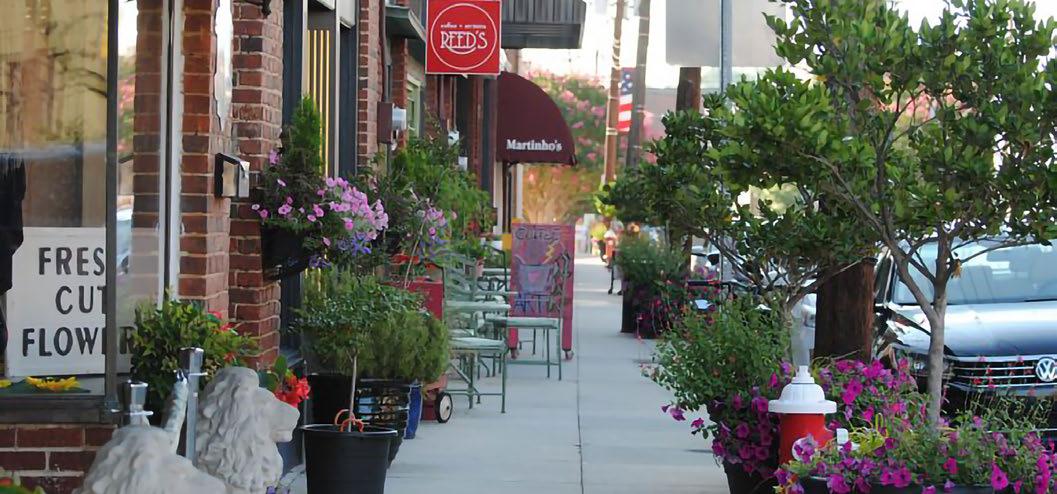

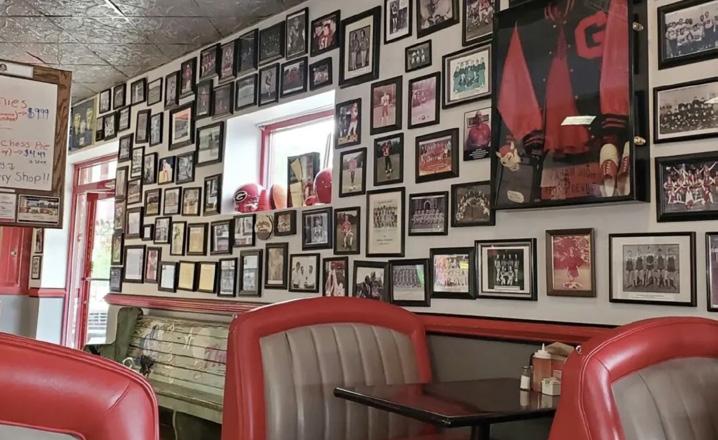
“taking up family farm lands,” which “takes away from the community, the closeness of families, and [creates] traffic and congestion.” In East Burlington, when asked what they would tell friends in other places about Alamance County, the response was: “Stay there. It’s too crowded here.” Some Southern Alamance residents exclaimed: “Don’t come!”
Still, others are excited by the growth, believing it is “inevitable,” as one community leader said. “You’re seeing a lot of young new entrepreneurs. I love that we’re seeing that inspiration.” A West Burlington resident likes all the new restaurants and businesses, while another West Burlington resident said that growth from the Research Triangle and Piedmont Triad will benefit Alamance “from both sides.”
There are real pressures occurring from all the growth. Some people say more public investments must be made to “support critical services that affect all of us every day,” including investing in “teachers, social service workers, law
enforcement, EMS,” a leader said. Southern Alamance resident said that local schools are being stretched by the growth, complaining that elementary schools have classes of “30 plus children. It’s unacceptable,” leaving teachers overloaded, underappreciated, and underpaid. But not everyone is willing to pay more in taxes, and a debate emerged in some conversations about the balance between property and sales taxes.
Zoning is a point of tension. Here’s one exchange from the Southern Alamance conversation: “I’d do more zoning, I’d like to see more of that,” to which another individual replied, “I would disagree with you a hundred percent! I don’t want anybody telling me what I can do with my farmland.” For some people, this comes down to the role of government in people’s lives. Another resident explained, “As a community, we really don’t want to be governed because we think that we do a good job of making decisions ourselves. So we’re sort of anti-government. But then, we get frustrated by land use issues.”
Traffic is yet another major issue.
“The roads, infrastructure and tributaries have not been upgraded,” according to one resident. Concern about traffic was a common refrain. A resident who lives near Saxapahaw said traffic has “gradually gotten worse and worse. We used to sit out on our front porch every morning. Not a car, nothing. It is like Grand Central Station now.” Many people say too little planning is being done.
Alamance is “in an adolescent phase of evolution,” according to one leader, “between what we have historically been and where it’s inevitable that we’re going to be going.” How to “mesh” the competing pressures from growth is a big dividing line. An Elon resident said, “we’ve got school funding versus growth, versus schools not being crowded, versus lower taxes. It doesn’t compute.” A leader summed up the dilemma in this way: “We have a lot of people that just don’t want anything to change. Then there’s those pushing for growth. It’s very split.”
“Alamance County has really exploded compared to 20 years ago. It’s become more diverse. I don’t mean just color. I mean socioeconomic status, geographic locations, where people are originally from,” a leader said. Indeed, more and more people are coming to Alamance.
“We have a lot of people that just don’t want anything to change. Then there’s those pushing for growth. It’s very split.”
“We have people coming from Chapel Hill, Durham, people are from all over the place,” another said. New people are bringing change and along with it pulling at traditional ways of life in Alamance. “They’re not connecting with the old institutions—the old social community, religious groups, country churches. They’re not joining them or getting connected with the volunteer fire departments, the Civitans or Ruritan clubs,” a leader explained. Newcomers are changing the “look and feel” of the county, bringing “different education levels and different exposures to thoughts and ideas,” according to a Southern Alamance resident. This resident went on to say that newcomers need to care more about “the preservation of our beliefs.”
In the meantime, some newcomers see long-time residents as standing their ground. An Altamahaw Ossipee resident told us that, after moving to Alamance, they found that the community was
“very closed-minded and had one way of looking at people and how to do things.” This person was quick to add: “I don’t mean to offend anybody who is from here.” The same leader quoted earlier about a resistance to change in Alamance said many older-time residents hold onto a closed perspective: “‘This is the way that it’s been,’ or, ‘My family has been here for so many generations. This is the way that it is.’”
But the divide persists. Said a Saxapahaw resident, “I just am starting to see this divide and it bothers me.”
People say that where you live determines the access you have to basic services and resources. The county is “still segregated” when it comes to mental health support, good schools, and access to food, among other things, a resident in the Pleasant Grove/Green Level conversation explained. Another said, “There’s no mental health facility up here, no social service facility up here, there’s not even a Boys & Girls Club.”
A community leader told us that during COVID many poorer and rural students fell behind in school because they lacked Internet access. In addition, some seniors don’t have access to transportation, especially in rural areas. Indeed, as a Northern Alamance resident said, “Let’s
Newcomers are changing the “look and feel” of the county, bringing “different education levels and different exposures to thoughts and ideas.”
say you’re anywhere in the Altamahaw or Ossipee or Union Ridge area—if you don’t have transportation, you’re stuck.”
In Burlington, we repeatedly heard about the differences between the east and west sides of the community. “Look at the shopping centers here versus on the west side of town,” an East Burlington resident implored. “If we would move some of that back over here, our crime rate and teen pregnancy would reduce. All the violent stuff that we see over here would decrease.” In an East Burlington Spanish conversation, a resident explained that the impact of these


disparities is “depressing, especially for the children.” Rural areas in the county often lack adequate resources, some as simple as places for kids to play. Residents who live near Eli Whitney lament that their athletic field is in “the shape that it is. We used to have as many as 20 youth baseball and softball teams up there.”
In Mebane, the discussion around disparities evoked both great emotion and empathy. Here’s an individual responding to another comment made in her discussion group: “The one thing that touched me is when this young lady said ‘we have to fight’ to have what’s normal—a paved driveway, clean water. That, to me, is alarming. Why would we have to fight for something that would be normal in other areas?”
In Alamance County, it’s clear that where you live defines what you see and experience. The lack of connectedness
People say that where you live determines the access you have to basic services and resources.
between different areas of the county often leads to a fundamental lack of understanding of the lived experiences of others. “I can only talk about my side. I know Alamance is greater, but because of this historic divide, that’s all I know about,’’ a community leader explained. An East Burlington resident told us that many people do not see the “division and separation” in the county because of where they live. Elon was repeatedly referred to as “a bubble.” Meanwhile, in Saxapahaw, a resident there simply said: “Quite honestly, I don’t know anything about what goes on the other side of the river. I live on this side of the river.”
“Quite honestly, I don’t know anything about what goes on the other side of the river. I live on this side of the river.”
Disagreements around the role of law enforcement are especially intense in Alamance. An Eli Whitney/Snow Camp resident believes, as do many people, “Our law enforcement community is doing a great job.” Some community members appreciate opportunities to get to know officers, like an Elon resident who said they had attended a Saturday morning coffee, which they found really informative.
A number of people also praised the county sheriff, like this leader, who said the sheriff was “really influential” in getting agencies to work together “to be against crime and not worry so much about who gets credit” for taking positive actions. A Swepsonville resident said, “I absolutely think that our sheriff has been a true leader in this community. He has supported lots of areas of the community and he has been adaptable to the changing needs of the community,” to which another individual quickly replied, “I agree with that.”
But not everyone is in agreement about the positive role of law enforcement in the community, or about the sheriff. An East Burlington resident said the sheriff
is “the reason for so much friction,” while one leader said that many people feel they’re “getting a raw deal from the sheriff’s department in terms of how issues are addressed” and that some people believe law enforcement wants to “keep that fear out there.” One example of people’s concerns around law enforcement is the Juneteenth celebration from 2021. “They had a police check after the event,” said an East Burlington resident. “People were like, ‘What is this?’” They continued, “I have been here since 1980, and not one time have I seen police cars lined up on Church Street to check licenses and registration of folk, but they did that… The word got to everyone else of how ridiculously racist this was, there’s no way to sugarcoat it or anything.” Generally, there is a concern that law enforcement engages in an “indiscriminate use of force and harsh language.”
An Altamahaw resident said they want “law enforcement held more accountable for their actions, more training, having them pay attention to larger crimes instead of who they think may be illegal immigrants. Stop harassing the community and start protecting it.”

Race and racism came up in nearly every conversation. “The history and the culture of Alamance County has been identified as one of the most racist and segregationist counties in the South,” a community leader said. Another suggested that the county is “stuck in an era” from a long time ago, while a resident thinks “Alamance does not acknowledge its history and the depth of the history and the racial tension that still exists to this day.”
One leader spoke of the struggle to provide safe drinking water and sewer connections to the Black community in Mebane: “We had to file complaints at the United States Department of Justice” to get even partial action on these issues. Others spoke about the Confederate statue in downtown Graham. During recent protests, “They were calling people monkeys,” an East Burlington resident reported, and “I’m watching people I went to school with out there. I was just like, you felt this way about me this whole time? When we were in school, you were my best friend, coming to my house. How is
this happening?” Another Graham resident told us, “I don’t feel safe. I had never been where I was told that I was genetically inferior before I came here.”
Many people across Alamance believe the Confederate monument represents the existence of White supremacy in the county. One pastor referred to the statue as a “beacon of anti-light that speaks strongly to the values of the community, at least those in power in a community that are not willing to take it down and contextualize it in a way that might actually be helpful.” Another pastor
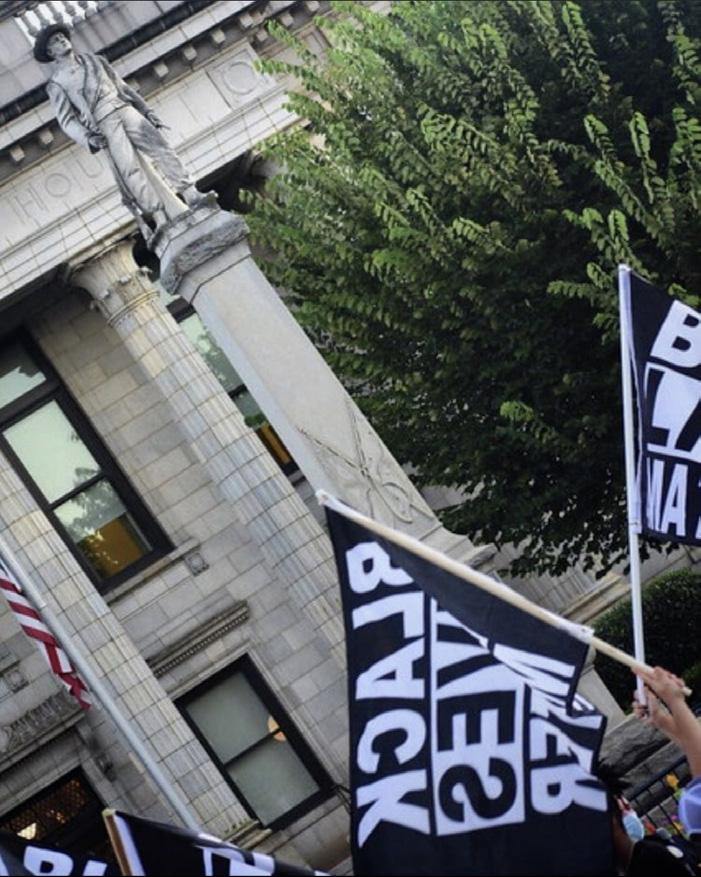
“Alamance does not acknowledge its history and the depth of the history and the racial tension that still exists to this day.”
said that “people who come to our town center, who are Black, Hispanic, White, Asian, all different kinds of people, don’t feel comfortable and welcome in this county.” Meanwhile, others see the statue debate as “small sects of a group of one race and a group of another race trying to make bigger issues, as far as racial problems, than the majority of county residents see or feel.”
Despite strong racial tensions, “little by little, the barriers between the Hispanic community and the White community have been broken down,” a resident in the East Burlington Spanish conversation said. The resident insists that the change, though “very little,” has happened “with a lot of effort, and thanks to the groups that exist.”
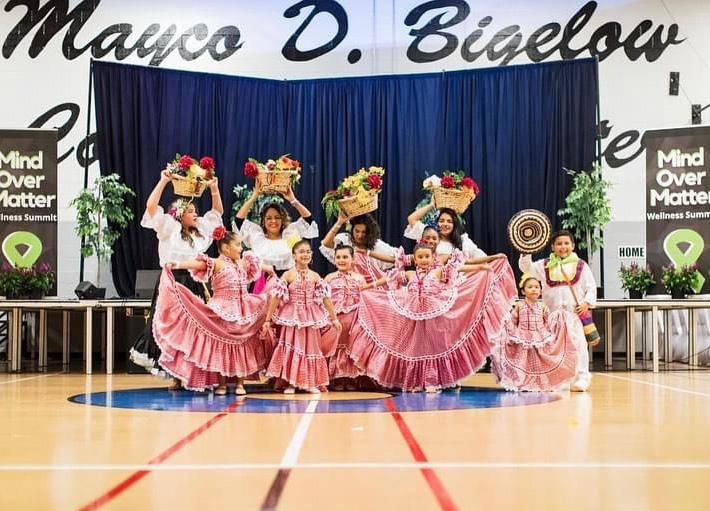
But not everyone is ready to trust. “It’s so hard to trust people. Any person of color in this room can tell you right now that going into Graham is scary because you never know how people are going to react,” another East Burlington resident said.
Some attribute this problem to a lack of understanding among White people about race and racism. “A lot of the ‘good people’ don’t understand systemic racism yet. There’s an attitude that we’re doing enough to provide equal opportunity,” said one leader. Another said that “part of our struggle is Black people don’t trust White folk. We don’t.” They continued, “Relationships take time. Take racial equity work: people want a microwave type of situation to happen. It ain’t. Because we hadn’t taken the time to create relationships, we got to start there. That takes time to build, and to be vulnerable, and to talk out issues, and to really get the story out so people can understand where people are coming from and what their lived experience is. It takes time, and it has to be intentional.”
“Fear, there is a lot of fear,” is how a resident in the East Burlington Spanish conversation summed things up. A resident who relocated from California to Alamance said that “bigotry” in the county is so pervasive “you almost can cut it with a knife.”
People across the county, in virtually every conversation, expressed mistrust of elected officials in Alamance County. This mistrust is ingrained, profound, and pervasive. Many people believe leaders are in active pursuit of their “own personal gain or their own titles” and that they “forget how they got there: the people,” a resident in the Pleasant Grove/Green Level conversation said. A Southern Alamance resident said that “a lot of leaders in the past 20 years” have been “really disconnected” from the people they serve. A common theme in various conversations was that many leaders are tied to legacy families and, as an Altamahaw Ossipee resident said, “I’m not sure that their top concerns include all of the entities in the county.”
A young person who just graduated from Elon University said that leadership in Alamance County can be “disheartening.” “I love this community. I look forward to living here. I want to see my community become a better place,” but this individual doubts that improvements are possible with the way
“some leaders around our community speak.” How do they speak? A Graham resident expressed deep frustration with efforts to engage leaders around race and racism. “Whenever we try to have a conversation about race, that gets shut down. They say, ‘We’re not racist.’” And yet people insist that supporting efforts to advance Black and Brown communities can occur only “if people in power care about Alamance as a whole. The community needs to look at itself in the mirror and say, ‘This is where we fall short and where we could do something about that,’” a leader said. The leader then asked, “Now, are we ready to have those kinds of conversations?”
Many people told us that they want and need leaders to show up differently. First, they must deal with the fear of the unknown. “Those who are in power are afraid of change, and they view change as something very threatening because it’s something different,” an East Burlington resident said. A community leader also spoke about this challenge: “It’s not showing up with having the answer, but showing up willing to listen and then move forward from there. They just need to really learn from the community itself.” Showing up differently also will require leaders to be “welcoming,” a community leader said. This need goes directly to what it will take to gain the active engagement of Alamance residents. “Some people are
“It’s not showing up with having the answer, but showing up willing to listen and then move forward from there. They just need to really learn from the community itself.”
like, ‘Oh, well, the people don’t show up.’” But, they asked: “Have we asked the people? Have we reached out to say, ‘We need you. We want you.’?”
Indeed, people are looking for more leaders, and leaders who will get more done. A resident in the Pleasant Grove/ Green Level conversation pleaded for leaders to “come to a common goal regarding, ‘How can we help the people who got us here?’ That’s when you’ll start seeing a change in people getting stuff done.” In the East Burlington Spanish conversation, a resident there said: “We are always looking for a leader. A good leader and we don’t have that.” And a Southern Alamance resident added that they are looking for “an acknowledgment of the issues and a plan to overcome those issues.”
A resident in the Eli Whitney/Snow Camp conversation shared that the county is seeing problems “we have never experienced before as far as human trafficking and these drugs.
It’s overwhelming.” When asked what kind of community they want to live in, people’s first response is “a safe community.” That’s especially a concern now because of a recent uptick in gang activity. One law enforcement officer said, “Interstate 85/40 is the worst thing that has ever happened to this county. There’s stuff coming down that road that if a lot of people in this community knew, we’d probably pack up and leave.” People told us they see “gangrelated stickers’’ on the backside of street signs. With dismay, one resident said they “thought Alamance County was a safe place to live to bring your families up and not have to worry.” In reality, “You can’t do anything because you’re just not feeling safe.” Another resident shared, “Ain’t nowhere safe. I’ll tell you, especially young boys. The kids are shooting each other.”
Feeling unsafe in Alamance County extends well beyond gangs and violence to feeling unsafe to express one’s views. This is a recurring theme. “The challenge moving forward is how do we get people that are truly
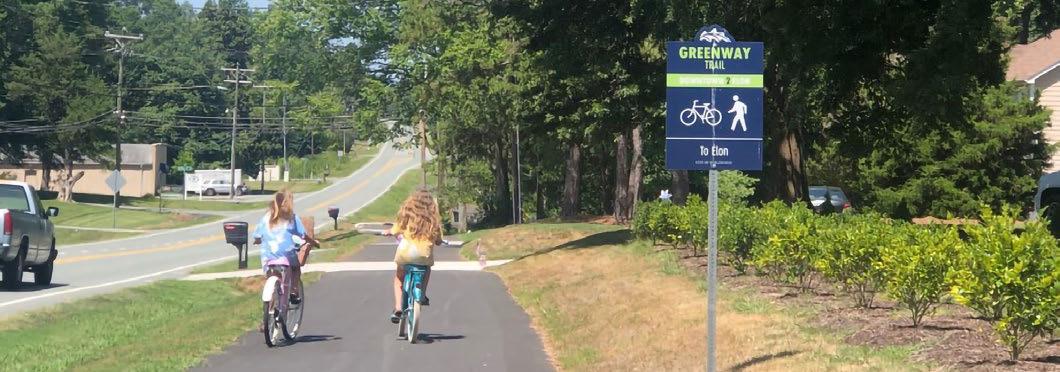
impacted by the outcomes to feel comfortable coming to meetings and having a voice?” a community leader asked. It won’t be easy; many people said they don’t feel safe engaging with others and making their voices heard.
A Mebane resident said that “some people are afraid that there is going to be repercussions against them if they speak out, because they want to hold onto their job, they want to hold onto their homes. They don’t want anybody coming around asking a lot of questions.” In Elon, a resident said: “Folks have to put themselves out there to actually make improvements in the community, and sometimes they get backlash for doing it.” A resident who lives in the northeastern part of the county said they wanted to put a sign in front of their home, but didn’t because they “feel in danger that somebody is going to shoot at it or something.”
The feeling of being unsafe is real among people in Alamance—and may only be getting worse. A community leader said that “over the years, it’s been harder talking to people.” Why? “Because people are more invested in things that offend them.” And, so, “people are afraid to say anything now for fear of being ostracized, canceled, sued. This really creates a barrier for honest conversation.” Indeed the words “safe” and “safety” came up time and again in these conversations and, in these particular contexts, they involved basic human relations and interactions.
“People are afraid to say anything now for fear of being ostracized, canceled, sued. This really creates a barrier for honest conversation.”
“Alamance County used to have a sign on the interstate that said, ‘Your Link to the Future.’ We used to joke about that because it was like, we’re not the future!” an East Burlington resident said. “The county is still kicking and dragging themselves into the future.” Another said, “There’s a segment of our county citizens that are just not receptive to any kind of a significant change.” A Southern Alamance resident joked about the “Your Link to the Future” slogan: instead, they said the slogan should be, “The Missing Link.”
To many people, the county seems stuck. “The systemic issues have not been addressed,” a leader lamented. And many people said they are “tired of fighting a losing battle.” Another asked, “Why go through the emotional stress to try to talk” about things that need to change? “I look at certain areas and the desire to fight’s been beaten out of people,” another shared.
People see issues that need work and wonder whether change is possible and whether they can muster the necessary energy to take on these challenges. “The discouraging factor is just the amount of work ahead and the lack of understanding of what it’s going to take to get it done,” a community leader said. People talked about feeling
“People of color, we’re tired of fighting. We’re tired of always having to say, ‘Don’t treat us wrong. We’re humans.’”
“traumatized” by trying over and over to create more understanding among fellow residents in Alamance with little results to show. “It’s frustrating because there’s no tools or no resources to make the change,” a leader told us.
“People of color, we’re tired of fighting. We’re tired of always having to say, ‘Don’t treat us wrong. We’re humans.’ We’re tired of begging,” one leader said. They went on to add: “So, then, folks say, ‘Why are you all putting so much energy into politics? Nothing’s going to change. It’s never changed. We never had equity.’ You see discouragement and people don’t come out for community events, participate in listening sessions and all that. They’re like, ‘We’re tired of doing that kind of stuff. When is it going to change?’”
Churches, once regarded as one of the most powerful agents of change and hope in Alamance, are facing their own challenges. One pastor said that local churches are “dealing with incredible

change and an incredible transition of pastors,” and, according to another pastor, many churches are now “more inward-focused than we should be. We are consumed with survival.”
Tired. Frustrated. Discouraged. Many people wonder when will change be possible.
Amid the many challenges in Alamance, hope does endure. And the pandemic has helped to expand that hope.
“The one thing the pandemic did was broaden everybody’s scope of what was necessary,” a community leader said, which helped people reach out to others not usually in their “inner circle.” Another leader suggested that
Amid the many challenges in Alamance, hope does endure.
due to the community response to the pandemic, there is a growing sense of public will to address common concerns.
“Our community is more committed now than ever to addressing issues—racial issues, police brutality, educational issues, equity and inclusion.” They continued, “We’re in a better place than we’ve ever been.”
We heard many comments about the positive momentum resulting from meeting the challenges involved with
“The solutions are right here in the community.”
the pandemic. “We’ve gone through a lot over the last couple years with the pandemic. In some ways, we have collaborated more and unified forces more. It’s good to see people coming together, realizing how we can support each other and bring resources together,” a leader said. “Post-COVID, there’s a huge difference. People are more welcoming.” Referring to stepping forward with others, the leader added. “Before, I didn’t have the comfort level or the courage to do so. Now it’s like, I’ve got to do something. I’ve got to speak up if I want to make a difference.”
The spirit of supporting one another is more present nowadays. “There are lots of events that happen in the community when people are sick, or if someone falls on hard times. People want to help each other out, and want to do things for other people,” an Altamahaw Ossipee resident said.
This increased cooperation—however big or small, or however widespread— is being seen among nonprofit organizations and other groups in the community. “A lot of the work that grassroots organizations are doing, they’re actually creating spaces to have
conversations on issues that affect Alamance,” one leader said. We heard about many of them, including those being held by LatinxEd, Alamance Achieves, CityGate Dream Center, the Alamance County Health Equity Collective, and others. This leader said that by holding these conversations, there is an “opening” to “address things happening in our community, whether they are good or bad.” Another said that the pandemic prompted the community to “recommit” itself to making progress and to “rekindle” the programs and community meetings that can make a difference.
“The Solutions are Right Here”
There is a growing belief among some in Alamance that they must find ways to work across the real differences
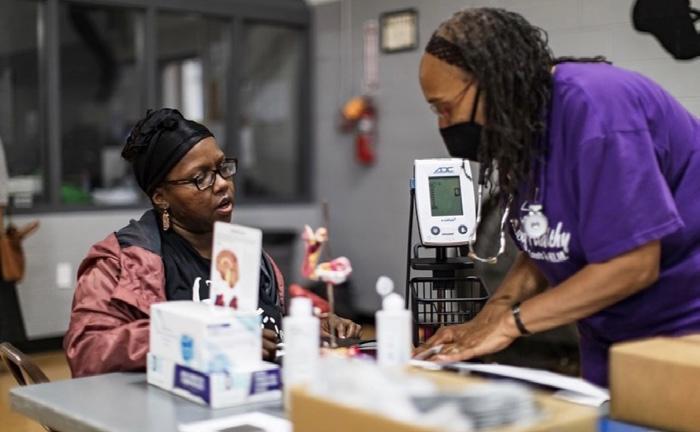
that plague the county. But it won’t be easy. “What happens when we have conversations is that we become defensive,” a Graham resident said. “We don’t do well with change,” a leader added. “It’s scary, it’s uncomfortable, and plays into why we’re resistant.” And yet, like this East Burlington resident, many people feel that “the solutions are right here in the community.”
Getting to those solutions will require a new kind of engagement, starting with the need for people to look for what they hold in common rather than just that which divides them. But the impulse to seek, even exploit, difference is an
“What we share is more than what we don’t.”
embedded norm in the community. “There are so many things that divide us: color of our skin, socioeconomic status, religion, politics,” an East Burlington resident said. And another said, “The way that we label people, that’s what breaks my heart. I grew up in the mountains of North Carolina. I was labeled an ‘Appalachian regional White.’ That meant I was unintelligent,

worth nothing but a good old mountain country boy. How do we get beyond that?”
Here’s how. In Saxapahaw, a resident argued that “folks are folks, people are people” and “we must look past preconceived notions, ‘Oh, he’s a pastor. He must be a certain way,’ or ‘She’s selfidentified liberal. She must be a certain way.” In East Burlington, a resident struck a similar note: “We can sit around the table and everyone can have their own perception about what they see, but until they really understand what’s going on, they may not see it.” A resident in one of the Spanish conversations urged people to see that “what we share is more than what we don’t.”
Moving forward will require some real give and take. Here’s how one leader summed up the challenge: “There are those who were taught things through their religious and faith-based communities that feel differently about those who think, ‘You just need to understand, it’s the way of the future.’
How do you blend those together?”
Religious leaders believe they have a role to play as “the messenger of unity in a divided nation, divided churches, divided communities, divided families,” according to one pastor. This pastor said people must “break down the barriers of denominations, affiliations, and regionalization.”
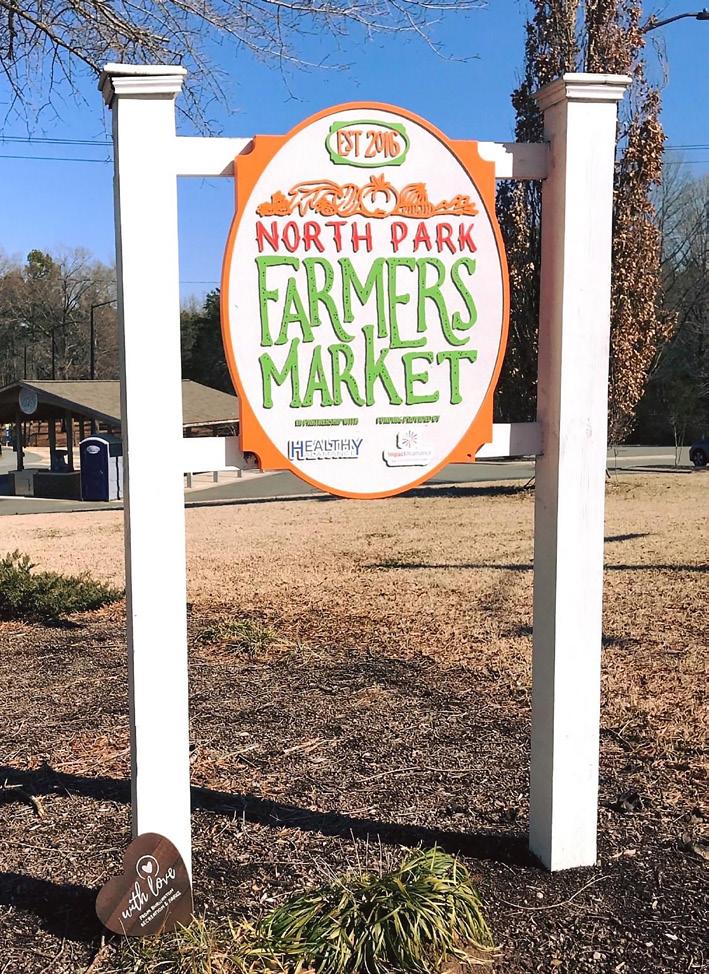
To make any progress will require getting beyond “superficial” conversations, according to a leader. ”There’s probably some things that would be not feasible to do,” another said, but having more meaningful conversations “would be a place where things could be weighed out and pros and cons could be discussed. Things that had merit could be expanded on and talked about more.” Another said, “If we understand why some of the things in our community may be occurring, it gives us the opportunity to problem solve,” and added, “there’s a healing process when we’re open and honest with ourselves as community members.”
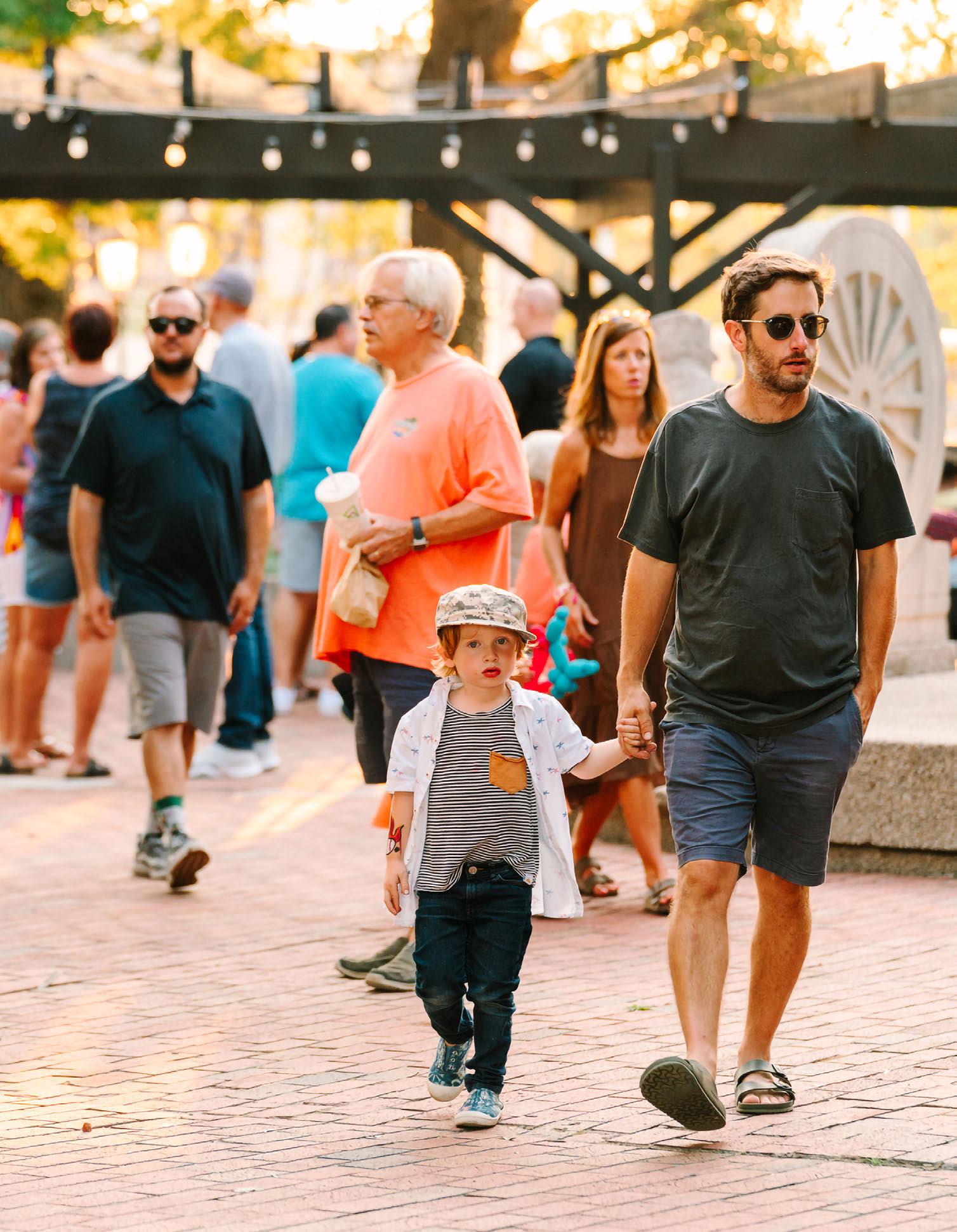
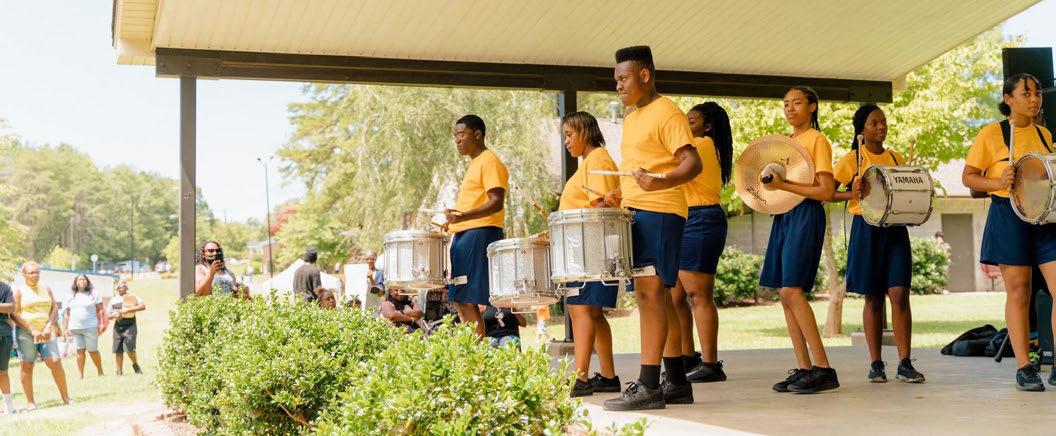
The Harwood Institute’s research and on-the-ground initiatives in communities across the U.S. and elsewhere suggest that for a community to work effectively, it needs a web of fundamental structures, networks, and norms. “Public capital” is what we call this rich, complex system. Nine factors make up The Harwood Institute’s definition of public capital, each of which a community can actively develop.
In this section, we offer a close look at the Alamance County community through the lens of public capital. This framework should be thought of as a touchstone— not a scorecard—for understanding the current conditions of Alamance and how to strengthen the community so it can tackle its challenges and create a greater sense of possibility and hope.
While trying to picture how public capital works, keep in mind an ecosystem that exists right outside your door—or put more simply, how our air, water, land, and habitat interact daily. On their own, each of these factors seems quite simple and isolated at times. Indeed, each is often talked about as an independent element. What makes an ecosystem work is the robustness of each element and the healthy relationships between and among them. Public capital operates in much the same way. The nine factors are at once independent and yet highly interdependent. It is the rich, complex interaction between them that makes a community work.
An Abundance of Social Gatherings — that enable people to learn about what is happening in the community and begin to develop a sense of mutual trust.
Organized Spaces for Interaction — where people can come together to learn about, discuss, and often act on common challenges. These spaces help a community begin to identify and tap resources to address concerns.
Catalytic Organizations — that help engage people in public life spur discussion on community challenges and marshal a community’s resources to move ahead. These organizations help lay the foundation for community action, but do not act as the driving force.
Safe Havens for Decision Makers — where a community’s leaders can deliberate and work through community concerns in “unofficial,” candid discussions.
Strong, Diverse Leadership — that extends to all layers of a community, understands the concerns of the community as a whole, and serves as a connector among individuals and organizations throughout the community.
Informal Networks & Links — that connect various individuals, groups, organizations, and institutions together to create the cross-fertilization effect of experiences, knowledge, and resources. People carry and spread ideas, messages, and community norms from place to place.
Conscious Community Discussion — where a community has ample opportunity to think about and sort through its public concerns before taking action. People play an active role in helping decide how the community should act.
Community Norms for Public Life — that help guide how people act individually, interact, and work together. These norms set the standards and tone for people’s engagement.
A Shared Purpose for the Community — that sends an explicit message about the community’s aspirations and helps reinforce that everyone is headed toward a common goal.
One of the most tangible dimensions of public capital is the presence of social gathering places. From youth sports to potluck dinners, these are occasions for people to learn about what is going on in the community, forge relationships, and begin to develop a sense of mutual trust. These gatherings are the seedbed for creating and maintaining public capital.
Parks and sporting events bring people together. Alamance residents cherish local parks across the county. Events sponsored by various parks and rec departments, like the Carousel Festival in Burlington, bring people together. We heard many comments about “different sports leagues” and that “while kids are playing, the parents are chatting.” Across the county, high school football—described as “Friday night lights”—creates a festive and social atmosphere where people gather. Pools, recreation clubs, and Sock Puppets minor league baseball games are also popular gathering places.
Community centers are important social gathering places. The Dream Center “always has something going on” and is visited by many Burlington residents, especially Latinx families. A community leader explained, “It’s so nice
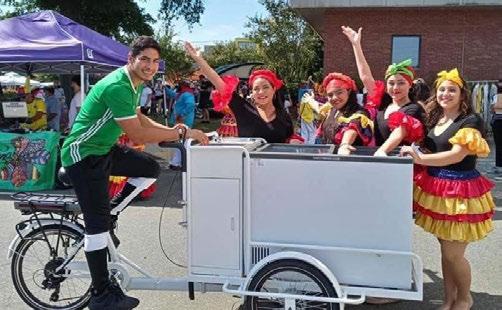
to see the community come to a shared space where they can interact with one another, learn more about each other, and build community.” Other community centers mentioned include Mayco Bigelow at North Park, Mebane Arts and Community Center, Pleasant Grove, Eli Whitney, Altamahaw Ossipee, and Mount Hermon. In some areas, volunteer fire stations function as community gathering places. The Tribal Center hosts Pow Wows that one community leader said “bring our people and outsiders together to mingle, to have a good time, which really promotes a sense of camaraderie.”
Downtowns are hotspots for community connection. Across the county, there has been “new downtown economic development that’s exciting to see,” a West Burlington resident explained, including festivals and vendor fairs. “Graham does very well— and its new city park is fantastic!” a community leader declared. Another mentioned Graham’s “outdoor festivities, music and shops that draw a diverse group.” Downtown Mebane
“gives a community vibe,” with its fall festival, farmers market, parades and more. The Culture Mill and Haw River Ballroom in Saxapahaw are frequented by many, especially by people who live in Southern Alamance.
Concerts and music festivals are popular spaces where residents come together. Saxapahaw was described by a community leader as “a destination” where, on Saturdays, there are “live bands, food, you can drink beer out there. It’s kid friendly.” Another explained, “Alamance Arts does Musical Chairs—little concerts, different genres” that “move around the county.” Smaller music events, like jazz nights at community centers, are also appreciated by residents.
People gather in their own geographic areas where they feel safe. An Altamahaw Ossipee resident said, “Everyone seems so separate in their own demographics.” Another added, it would be good “if we had something where you could sit down at the picnic table with other parents that look different than you and strike up a conversation.” But the reality is that people are separated by demographics and geography. “It feels like the walls and the stakes are lower because these folks live right next door to you. They’re in community with you. It makes folks
“Everyone seems so separate in their own demographics.”
feel safe,” a community leader said. Latinx residents talked about feeling comfortable at the Dream Center and the Mayco Bigelow Community Center. The Native American community finds a similar space in the Tribal Center. There are disparities in access to social gathering places. An East Burlington resident stressed that “things to do are on the other side of town,” including movie theaters and bowling alleys. Rural areas of the county also lack access; as mentioned earlier in the report, residents who live near Eli Whitney lament that their athletic field is in “the shape that it is. We used to have as many as 20 youth baseball and softball teams up there.” A Snow Camp resident said, “We have a Dollar General and a post office, but not a community center,” and a Pleasant Grove resident mentioned the barrier of having to pay to reserve recreational facilities.
Limited transportation and knowledge also separates people. “These spaces are also very much divided,” one leader explained, because “you can’t get to Tanger Outlet without a car. You can’t

get to Alamance Crossing without a car, or downtown Burlington.” The spread out geography of the county is a particular challenge for many people. Another leader said, “We need more public transportation. All the spaces I mentioned are on one side of town. If you live on my side of town, you can’t get to those without a car.” Some people said it’s also hard to find out about what’s going on in other parts of the county. One resident explained, “You may see division and separation because a lot of people are not finding out about these things.” East Burlington residents said there are barriers to places like swim clubs because “you got to go online, you got to make an account. Some of our parents might not be good at doing that.”
COVID-19 has affected what social gatherings look like. One leader explained that the Black community used to frequently gather in spaces like the barbershop and places of worship, but “the pandemic has changed a lot of that. Maybe we’ll get back to it, but I
don’t know that we will.” Another leader said, “Our church has been really skittish about going back inside. They actually had church for a long time outside. Even after the government said it was okay to go back in, they liked it outside. People around here don’t really like change and they get used to something, it’s hard to get back.” An Elon resident noted that as a result of these changes, “You don’t know your neighbor anymore.”
These spaces provide room for people in a community to come together to learn about, discuss, and often act on common challenges. Organized spaces for interaction help a community begin to identify and tap resources to address concerns. The focus is on the opportunities that exist for people to come together—and not necessarily the existence of physical buildings.
A number of official spaces for interaction exist. In Alamance, various committees, commissions and councils focus on bringing people together to address community issues. A community leader said, “Several citizen committees serve to advise the planning board and the council on parks and rec, bike and PED (bicycle and pedestrian) programs, downtown development.” Another
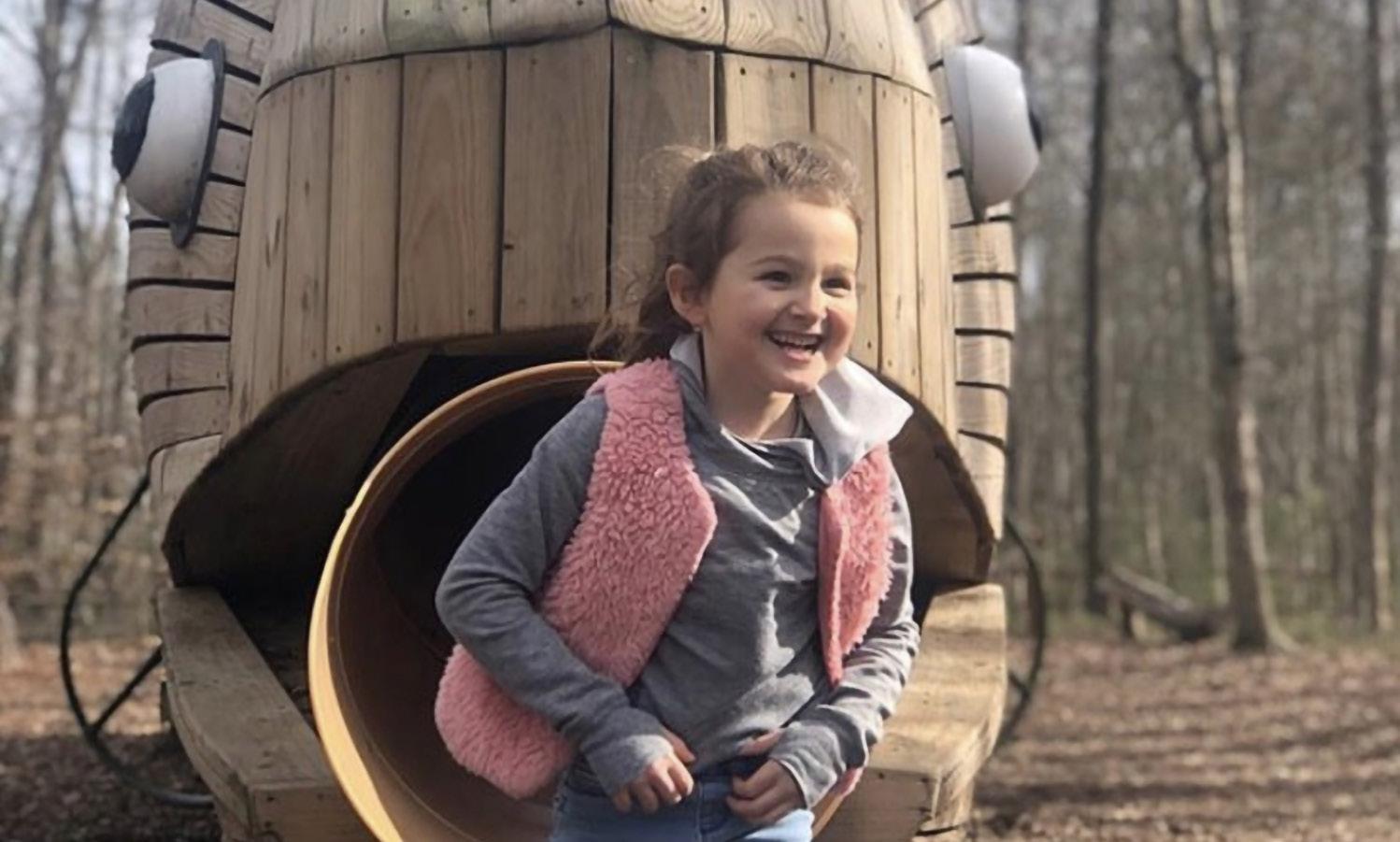
pointed to the Superintendent’s Equity Advisory Council. Virtual organized spaces have emerged more recently. “Zoom has been great for creating community,” one leader said.
Various community organizations create spaces for interaction.
Organizations like Impact Alamance, Alamance Chamber of Commerce, Down Home NC, Alamance Achieves, NAACP Education Committee, and other civic groups are viewed as important conveners of organized spaces. A community leader said you can find “the bulk of executive directors” at the United Way’s monthly community council meeting (even though these meetings slowed during COVID). Some people noted that in Graham and Burlington, smaller organizations and grassroots
leaders provide important spaces for people to “talk about issues that we need to come together on.”
Some churches host spaces for interaction. “There’s a church on every corner in this town,” a Mebane resident said, “that’s where issues in the community are addressed.” In particular, community leaders and residents described a handful of churchled initiatives that are bringing White and Black congregations together to work on bridging racial divides. This is especially important because “church time is the most segregated time of the week,” one resident said. “People are trying to come together and heal some of the wounds of the past,” a community leader added.
Organized spaces typically attract the same people. It’s always “the same people coming through those circles,” as one community leader put it. When community concerns are brought up in conversation, an Elon resident often hears responses like, “That doesn’t really affect me.” Other people say they’re frustrated by “the same group of people bringing issues up.” One leader sees the “need to open this up more” and find more ways to bring more people into these spaces. A resident said, “If we did have more of our community coming, it would make things so much easier for our different communities.”
A lack of action. A community leader described organized spaces in Alamance County as “quite frankly a lot of BS and not much progress being made.” Organizers like to proclaim, “This is all the good we’re doing and talk about how many different members they have and how they represent them, as opposed to what’s really going wrong.” Another leader asserted, “Our challenge is the follow-up.” Many residents agreed, like this one who said, “People don’t have hope that things will change and are frustrated by a lack of action.” In order to produce real action, “You need commitment from more people than just a few open-minded leaders,” one resident explained. “We’re not getting the buy-in.”
Many residents are hesitant or unable to attend. Some leaders said that organized spaces aren’t producing the progress needed because “the trust is not there.” Another said, “Underrepresented communities don’t show up. They’re not comfortable or able to be there.” Ensuring people feel valued may be part of this challenge. “If they don’t feel valued, they don’t come back,” another said. “People are just feeling used.” Some people are unsure about bringing their “whole selves to these spaces as people of color, as women, as LBGTQ members of those communities,” explained a Graham resident. For some people, getting to organized spaces is hard: “The distance is big,” explained a Saxapahaw resident. “For me to meet somebody from where I am who lives in Burlington, it’s a 40-minute drive each way.”
There aren’t real conversations. One leader said that existing spaces typically seek to address one narrow issue at a time, an “issue that draws people in.”
“People don’t have hope that things will change and are frustrated by a lack of action.”
“How are we interacting with the community?” asked a community leader. “Are we allocating time to find out what the real issues are, or are we assuming we know?”
Many of these conversations are often professionals talking at people. The approach leaves little room for open, authentic conversation. “There’s nowhere that anybody could go and say, ‘You know, I’ve got an idea about something that could be good for our community,’” a leader observed. “They can go to a county commissioner’s meeting and stand up there and make public comments, but it’s public comment and it’s three minutes and they’re gone.”
Assumptions get made about people’s concerns. “How are we interacting with the community?” asked a community leader. “Are we allocating time to find out what the real issues are, or are we assuming we know?” Rather than really listening to people, leaders often jump to conclusions and immediately “try to come up with solutions,” another said. “We’ll have meetings about revitalizing the area, and nobody shows up,” another noted, and then the response by leaders is, “‘Well, see, I told you. There’s not

a problem. Nobody came.’” One leader even told us, “There are no problems here that I don’t know about.” Another leader disagreed, saying that the way business is done in Alamance needs to change: “Are we going out and sitting down with people? Are we taking the time?”
People want more organized spaces. “The whole ten years that I’ve been here, I have felt like the number one thing lacking is any real hub for dialogue to take place,” an Altamahaw Ossipee resident said. People across the county agreed that more organized spaces are “necessary” to work through tough issues together. “The problems are not going to go away,” a leader said. However, one leader said that to make these spaces a reality, the county will have to overcome the tendency to want everything “wrapped around turmoil, conflict about social services, and political involvement.” This is a theme throughout this report.
Catalytic organizations engage people and institutions in the work of public life, spur discussions on community challenges, and marshal community resources to move ahead. These organizations help lay the foundation for community action, but once an initiative is up and running, these organizations often move on to the next challenge.
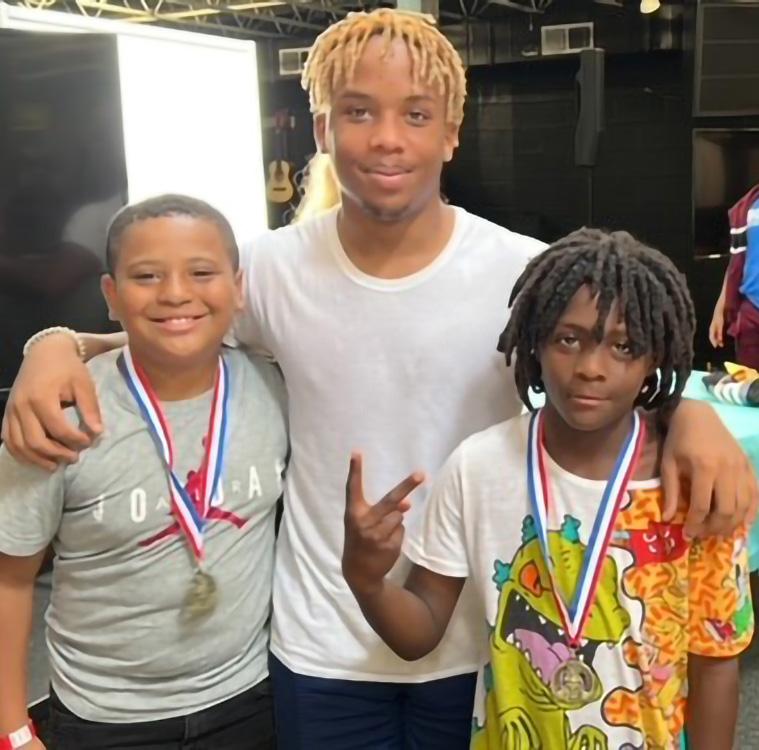
People point to a handful of highly catalytic organizations. In recent years, Elon University is seen as playing a more active community role, including working with local schools. Alamance Community College is viewed as having the “resources to really bring folks together,” a leader said. Others point to Impact Alamance. As one leader explained, “They’re good at building collaboration among different groups, bringing different leaders together.” Many others highlighted the catalytic role the Dream Center plays. A Spanish-speaking resident mentioned programs the center holds for children: “They dedicated themselves to the children first.”
An array of other organizations are sparking action in pockets. Various organizations are “really trying to solve issues that not many people are looking at,” explained one Southern Alamance
Across the county, there is frustration that organizations focus on “protecting their own turf” and stay within “self-contained bubbles.”
resident. United Way is held up as an active organization and “moving towards having equity embedded in grantmaking.” One leader described the Chamber of Commerce as a “resource our businesses really lean on” and “a place for conversation about pressing issues.” Alamance Achieves works to “support students from cradle to career,” while Down Home North Carolina is “really engaging rural people and poor people, really trying to be intentional about getting their voices at the table and meeting them where they are.” West End Revitalization Association catalyzes action on environmental justice issues. LatinxEd brings leaders and residents from across the county “together in one space.” Other organizations noted include The Caring Kitchen, Allied Churches, Salvation Army, Family Abuse Services, YMCA, Boys and Girls Club, PACE, the Kiwanis Club, Civitan Club, Ruritan Club, Meals on Wheels, and the African-American History Museum.
Churches are key entities in Alamance, but struggle to be catalytic. While many churches were once “really involved
in community projects and outreach,” a resident shared, “that has not been the case in the last few years.” According to pastors and residents, many churches are “struggling to survive.” Churches do come together under the umbrella of “Allied Churches,” but many people said that the effectiveness and robustness of the coalition has declined in recent years. A leader echoed the sentiments of many in these conversations that churches are “missing a great opportunity” to bring the community together. One pastor argued that churches must “continue to build networks and partnerships” but that this is made difficult by “a huge changeover in leadership, an incredible transition of pastors.”
Competition and fragmentation undermine efforts. A pastor said, “If anybody in any one of these rooms can say, ‘I know all these different organizations that are at work,’ they should make them Pope of Alamance County. I’ve been here 11 years and I still can’t figure it out.” A community
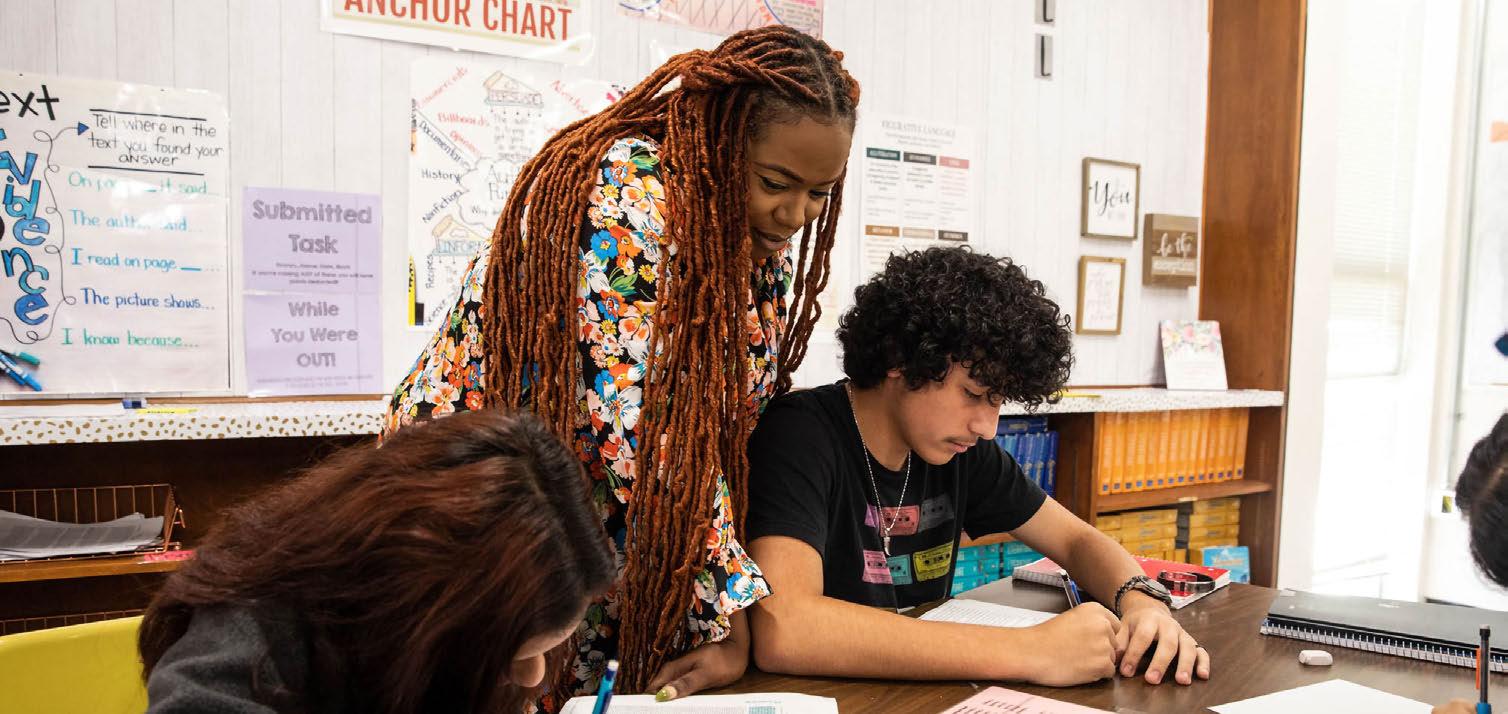
leader said, “The right hand doesn’t know what the left hand is doing.” Another suggested that “groups working with one another is rare.” Across the county, there is frustration that organizations focus on “protecting their own turf” and stay within “selfcontained bubbles.” When objectives and timelines are narrowly defined, groups can find a way to come together; but when conversations turn to broader issues, cohesion tends to fall apart, making it hard to collectively “reach decisions and steer initiatives.” A theme in our conversations was that some organizations and individuals are just “trying to build clout.”
Organizations are not focused on underlying issues. We heard that too many organizational efforts focus on “rapid response to crises” rather than
addressing root causes. “Nonprofits are not working on systems-level change,” a leader complained. The result is that “teachers, social service workers, law enforcement, EMS don’t get supported” in ways that they can make a real difference, explained a resident. People said repeatedly that organizations must change their focus if more progress is to be made. To combat hunger, housing and other challenges, “We have to go upstream and figure out why people are in the shape they’re in in the first place,” a community leader argued.
People want more action and results. A strong sentiment exists that organizations need to move faster and push harder to get more positive results. Speaking about organizations in the county, one leader asked: “Why are you not standing up in front of the school
board demanding the type of education we need in this community? Why are you not leading the charge?” Community members are frustrated by a lack of progress. A resident said, “We just keep recreating that kind of unfair environment that leads to broken families.” They fear that if this cycle continues, it will have a “detrimental effect on the children and thus the future for this county.” One leader lamented that many organizations “don’t have leadership that’s going in the right direction.”
COVID-19 spurred some organizations to work differently. The response to COVID-19 demonstrated that organizations and groups can and will work together. The pandemic allowed “organizations to see the need that exists and how they can be a part of that response,” one leader told us. For instance, when it came to providing vaccinations, “United Way helped with recruitment of volunteers. A nonprofit gave their space for the vaccine clinic. Emergency management came to figure out if the space was suitable. Father Paul helped with outreach, as well as the police department,” another said. This COVID-response work was “a testament to relationships.” Some people in the conversations and interviews said this was an example of how the community should be working together moving forward.
Safe havens are places where community leaders—leaders at any level—can come together to talk and work through community concerns in “unofficial,” candid conversations.
Different groups of leaders get together in their own enclaves. Community leaders described informal settings where different groups of leaders gather. The Country Club is a place where some leaders congregate and network, while others “come together at a coffee shop to talk about a certain topic,” one leader described. “But it’s ad hoc, not ongoing.” Some circles of leaders may meet in other settings more regularly; one community’s “mayor, a former council member, and a bunch of their friends meet for breakfast every Wednesday.” We also heard that a group of businessmen come together to “discuss how we can help the community.”
Safe havens for elected officials once existed but have fallen off. number of leaders told us there used to be quarterly convenings where “every single elected official from every municipality would meet.” These meetings served as an established place where leaders could talk about their ongoing projects and concerns.

“The more we get to know each other as people, the more we can serve better together.”
While this practice no longer exists, we did hear about mayors from across the county planning to re-establish their routine of meeting regularly. Also, government leaders “branch off in groups of three or four and talk.”
There are places where grassroots leaders meet up. One leader explained that grassroots leaders seek out spaces where they can “be in relationship” with one another in backyards, living rooms, restaurants, at cookouts, and on Zoom. Warehouses and churches were also named as meeting places. Several leaders spoke about the importance of having safe spaces to come together. Another told us,“I feel more connected to people when I’m in my home, and I invite people over, or when people invite me to their home. I feel warm, I feel invited, I feel welcome.” The time leaders spend together in these spaces is about building real relationships and discussing “what we can do together, and what kind of funds it’s going to take to do that.”
Some leadership programs provide safe spaces for developing leaders. Leadership Alamance, the program run by the Chamber of Commerce, provides
a space for emerging leaders to engage openly with one another about “what’s going on in our community,” as one former participant said. Another leader talked about the Leadership Institute organized by Impact Alamance: “A lot of us have been a part of that, and we focus on leadership development, not on finding solutions to use.” Leaders who had been through these programs or knew about them said that they provide an important space for leaders to get to know one another and forge genuine relationships.
Some leaders want to get together more. Leaders who serve together mostly stay within their own sphere outside of their work. One leader spoke to the importance of changing this norm, saying, “The more we get to know each other as people, the more we can serve better together.” Some leaders seem ready to do this. However, there has yet to be a space where “we all get together and where it’s a no judgment zone.” Another expressed the importance of sparking conversations across dividing lines, saying, “Relationships get formed
when you talk.” But most leaders could not name spaces where they feel they can comfortably gather across areas of work to discuss community concerns, especially when real differences exist.
There’s doubt some leaders want to cross dividing lines. There were mixed perspectives on the readiness of various leaders to come together in safe places across divides. “I’m just not convinced that it would be beneficial,” a community leader said. Especially when it comes to issues involving race, some leaders “can’t envision a situation where we are going to get together and people are going to put down their political leanings to be perfectly honest about anything.”
Another explained that previous conversations have “proven to result in conflict.” Some leaders wondered if everyone would be welcomed in such conversations. A Black leader recalled a time when he and his colleagues were invited to a meeting but it was clear “they didn’t want us there.”
Strong, diverse leadership must extend to all layers of a community. Leaders must understand the concerns and aspirations of the community as a whole; they must serve as connectors among individuals and organizations throughout the community.
Elected leadership is dysfunctional, mistrusted, and resistant to change. Some people appreciate how county leadership has “opened up doors, making incentives available to worthy business enterprises” and “kept the tax base low,” but many more expressed strongly negative views about current leaders. County commissioners were described as “asleep at the switch,” “stuck in a different era,” and “never getting things done.” Views on the school board were more mixed, but people described it as being plagued by “literal fights’’ and “brutal arguments.” One leader said that “from a broad leadership perspective, we are not moving our community forward in pivotal areas like education, socioeconomics,
“From a broad leadership perspective, we are not moving our community forward in pivotal areas like education, socioeconomics, even safety.”
even safety.” Another said it would be good to know “somebody has got a hand on the steering wheel, and is driving this thing in a direction, not off of a cliff.”
A small group of civic leaders are standouts. This includes Sen. Amy Galey, who grew up in Alamance County and is known to actively engage with leaders and residents alike across the county, and has “made an impact.”
Residents also said that Rep. Ricky Hurtado’s election “provides a feeling of progress,” as he is the “first Latinx representative in Alamance County.” Another said Allen Gant, Chairman of Glen Raven, Inc., will “undertake any challenge” and “is adamant about the school district doing its best.” Tracey Grayzer, President of Impact Alamance, is regarded as “the consummate organizer and cheerleader.” Connie Book, President of Elon University, is “very forthright in trying to move the needle forward to make sure that everybody gets an opportunity.” Dr. Algie Gatewood, President of Alamance Community College, is regarded as a builder whose contributions are invaluable to Alamance. Omega and Brenda Wilson are known as strong advocates for the right to basic amenities.
People trust grassroots leaders closest to them. People told us that trusted leaders are “everywhere,” “in every neighborhood,” and spearheading
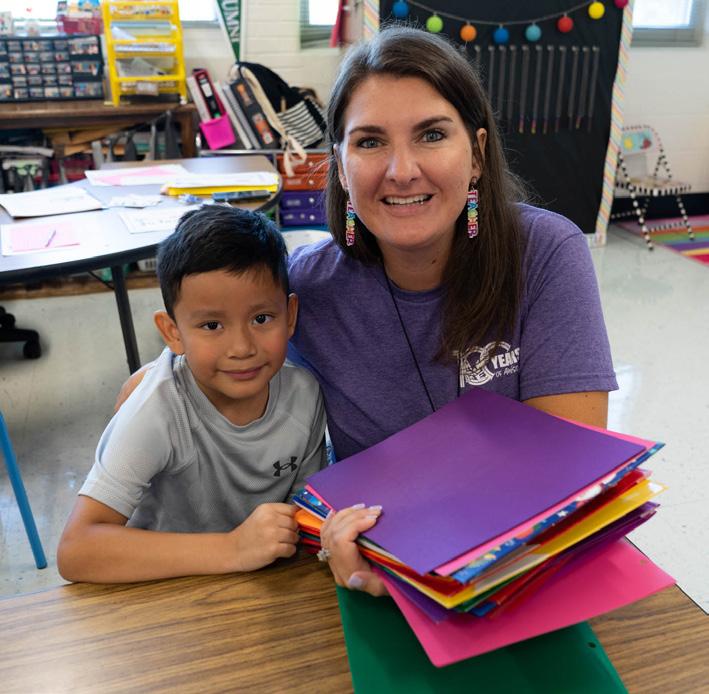
important efforts. A pastor called them “the foot soldiers, the grassroots leaders, movement leaders.” This group also includes school teachers and coaches, on whom people told us families and young people regularly rely. The key to such grassroots leaders is that they “know how to sit and listen and not take up too much space,” a leader explained. “They’ll walk alongside the community to make things happen” and they’re “on the ground, doing the work.”
Religious leaders are important. People across Alamance County “trust their pastors,” as a resident told us, often putting them on a “cultural pedestal,”
“Especially at high-level offices, there’s not enough diversity.”
“Leaders are struggling with how to reconcile competing pressures to welcome new people’s ideas while honoring the way of life valued by many longtime residents.”
as one pastor said. “They’re the voice that we hear on Sunday or Wednesday when we go to church,” explained a resident in the Pleasant Grove/Green Level conversation. “Most pastors and religious leaders have the ear of an organization or town council.” Pastor Lisa Edwards, “the Dream Center shepherdess,” is a pastor and leader who people trust; so too are Pastor Orwig, Reverend Covington, Reverend Hargrove, Reverend Bryant, Pastor Lamberth, and Pastor Kersey, among others. As noted elsewhere, many pastors are leaving or retiring, producing a period of major transition.
A lack of leadership diversity – both racial and geographic – deeply frustrates people. Some people describe Alamance County leadership as “all White, almost all the time” and thus “pitiful.” A resident said, “Especially at high-level offices, there’s not enough diversity.” A common explanation: “atlarge elections,” rather than elections by geographically-based wards. This means “the likelihood of a non-White person
being in a governmental seat is extremely low,” one leader explained. Southern Alamance residents also complained about the lack of geographically diverse county leadership, with one resident saying, “Districts would make all the difference in the world because then we would have representation.” A lack of diverse leadership creates tension: “That’s in the air here in the city and county meetings; you can see it and feel it,” another said. One grassroots leader said that when people of color speak at meetings, some leaders “automatically conclude that this is going to be trouble.” Many people expressed that community organizations need greater diversity in their staff leadership and boards.
A leadership vacuum exists due to overall fatigue and limited access for emerging leaders. An elected leader spoke of the challenges that come with holding a leadership position: “You’re going to be criticized. There’s definitely a cost.” One described former school superintendents as “outstanding, great leaders—but we chewed them up,

spit them out. They either retired or quit.” There is a deep fatigue among leaders in Alamance. “Exhaustion” and “oppression” are also cited as reasons why emerging leaders can’t find their footing. “There are a lot of people that have the potential to be leaders,” remarked one leader. “They haven’t made themselves very visible. They don’t want the hassle.” We heard that there is a group of emerging “movers and shakers” that “truly care, are truly committed, and just want to figure out what to do.” But how to do so is not always apparent.
Leaders are struggling with rapid growth. “Leaders are struggling with how to reconcile competing pressures to welcome new people’s ideas while honoring the way of life valued by many longtime residents,” a resident said
about recent growth. With growth, opportunities and challenges abound. “You’ve now got Walmart distribution and Lidl and these big companies coming in, which is great,” a Mebane resident commented. “It’s giving a place for people to work, but on the flip side, we’re not addressing housing needs.” This resident said people are looking for leaders who will promote “a vision of what we want this county to be, what we want this county to look like years down the road.” Similarly, a Southern Alamance resident described “a lack of vision from county leadership for a long time about how we accommodate growth. That filters out to education, to law enforcement, to housing. It affects all of our services.”
Many leaders are out of touch. People repeatedly described leaders as being “out of touch,” “missing relatability,” and “not proximate enough to community.”
The consequences of inaccessible leadership are significant and real.
“Funding will never be made available to those not being represented,” a Saxapahaw resident fears. Another has lost faith because “county leaders are not responsive to the needs of the rural areas.” And in a Spanish conversation, a resident asserted plainly, “We don’t have a leader.” One leader said effective leadership comes down to this: “Are you listening? Are you aware? Are you leading from a place of understanding the issues? And are you willing to take the step forward?” Many residents don’t believe leaders have an interest in “seeing how we bring everybody up.” An Altamahaw Ossipee resident said, “The only thing our commissioners care about is toeing the line on tax rates. I don’t remember ever hearing about even a meeting in this area to say, ‘Hey, we want to hear your concerns.’”
People are up in arms over a history of inaction. The Western Electric Plant is a prime example for many residents and community leaders and was the focus of this leader: “Historically, I don’t think there’s been a real push toward reflecting the concerns of the community. I’m hopeful we will find new leaders that are more reflective.”
Speaking about the permit issued to Alamance Aggregates for the development of a 300-acre stone quarry in their unincorporated community, a Snow Camp resident said, “The county
commissioners have tripped over their own feet in allowing the quarry to be out there, and I really don’t feel like they care.” The resident went on, “They’re typical politicians. It’s all politics, no action.” A resident in the Pleasant Grove/Green Level conversation said that instead of spending money wisely, “leaders are trying to figure out how they can line their pockets.” The bottom line is that people are deeply frustrated and even angry about problems that go unaddressed. One leader said Alamance needs more leaders who “aren’t afraid when they get answers they don’t love.”
Some people are enthused by active, younger and diverse leaders. Many have been pleased by the recent emergence of promising leaders who are stepping forward. “We’ve got some people on our city council who are younger, and more open minded,” according to a Mebane resident. An older leader is “really encouraged that the under 40 crowd is really getting engaged. They have the energy to figure out where the resources are.” Others expressed optimism: “We’ve got a higher level of education in the county than we’ve ever had before,” explained a resident. The community “knows what we deserve,” and to improve education even more “needs the constant push and accountability.”
Informal networks and links work to connect various individuals, groups, organizations, and institutions together to cross-fertilize experiences, knowledge, and resources. Through these networks and links, people carry and spread ideas, messages, and community norms from place to place.
There is a lack of strong networks between municipalities and levels of government. Strong networks improve the likelihood of effective knowledge sharing, strategy development, and program implementation; but, according to many leaders, individual municipalities in Alamance “tend to stick to themselves.” There are “turf wars” between government and law enforcement agencies, another leader said. One example of positive action is The Alamance Wellness Collaborative, which brings together municipal leaders, city and county planners, and other leaders to shepherd policy, systems, and changes that support healthy living and healthy food access. Additional efforts are being made to convene elected leaders in the county, but those connections remain loose. Reconnecting municipalities is “important, particularly for managing growth,” according to a leader, “and for supporting each
other and learning from each other.” Another said that while city and county governments “have not come together,” it’s time that they do. “We need to consolidate our resources and really move the needle” on various challenges, they said, while another resident said plainly, “We’re not going to get anything done until we can work as a team together, between all the municipalities.” Various networks engage different parts of the community. There are some strong networks that span Alamance’s agricultural community. The Farmers Bureau is made up of “movers and shakers doing what it takes to build relationships,” according to a leader, as is the Western Alamance Farmers Club, which is “very well networked, constantly networking information from all sorts of things,” according to another. The Chamber of Commerce fosters a diverse business leader network. Impact Alamance and the United Way are also noted network builders. One leader said that other notable networks include “the NAACP, the Rotaries, Kiwanis, fraternities, sororities. This is where people come together on a regular basis.” ALCOVETS, which convenes around supporting veterans, is another example. Political party meetings enable “bigger crowds of like-minded people” to come together once or twice a month to discuss various issues, another leader shared.

Some of the strongest networks come together around specific concerns. When an issue arises that affects certain neighborhoods or parts of the county, people form networks to organize responses. “There’s a lot of grassroots effort there when it gets in their community,” one leader explained. “If it’s something that affects them in a certain way, then they’re going to jump on it and try to get something done.” We heard about networks that exist around specific concerns such as education, healthcare, criminal justice reform, racial equity, and social justice.
Collaborations are sparking networkbuilding. A number of collaborations are growing in Alamance County and helping to forge new networks of
organizations and groups. Alamance Forward is a collaboration of LatinxEd, Alamance Achieves, and the Dream Center. A leader mentioned a renewed “focus on collaboration between law enforcement, our county leaders, and our school leaders.” Another talked about how Sustainable Alamance has developed “fabulous relationships” with law enforcement, the judicial system and others. And an Altamahaw Ossipee resident said, “I’ve been so pleased with the way some of the different industries, Alamance Community College, Elon, and the Alamance-Burlington School System have really started working together to provide opportunities for our high schoolers and provide solid jobs for the area.” During elections,

“the Chamber, Impact Alamance, Elon and the community college are always in lockstep to make sure that the community is informed about candidates,” a leader said.
Networks among churches are “sporadic.” Cross-church networking is “sporadic, popping out around issues like hunger, gun safety, the monument,” according to one pastor. Some crosschurch networking takes place around childcare, food and clothing drives, and advocacy; yet, in general, “We have a patchwork of services and a lot of things that just are not united or connected,”
a pastor told us. Notably, “You see more people show up when you have an emergency or a situation.” Allied Churches, which came together about 25 years ago, is “moving the community forward in addressing the needs of the homeless,” but has struggled to be effective in recent years. There is also “the ministerial alliance, an alliance of Black pastors in the community and in law enforcement.”
Silos and fragmentation undermine networks. Organizations “get their mission statement and their program
“There are a lot of community leaders involved in several groups, but for some reason haven’t managed to come together and cohesively work together—which is a real shame.”
set up and all operate in a silo. They don’t collaborate,” a leader said. Another observed, “People are turfy and territorial” and want to protect their programs. Another added, “There’s all these little startup groups that form when some crisis comes up. The little groups are scattered around, fragmented. It’s like, ‘I’ve got my little issue over here and they’ve got their little issue over there.’” All this fragmentation made one leader surmise: “There are a lot of community leaders involved in several groups, but for some reason haven’t managed to come together and cohesively work together—which is a real shame.” Another said, “If the heads of organizations could come together, we could make a big difference.” And a resident said that in Alamance, “The grapevine is very, very powerful” and so “when it comes to the small action items, we are really good at solving them. It’s the big problems where we have our heavy lifting.”
People aren’t open to different views. Leaders and residents repeatedly say that many people in Alamance aren’t open to different perspectives. In fact, some people resent those with different views and wish to avoid engaging with them altogether. An East Burlington resident said, “We’re saying people need to fundamentally build relationships, but everybody knows you build relationships at the speed of trust. So why is there no trust?” Why? An elected leader observed that “people from my party have absolutely no interest in getting to know and having a relationship with people from the other party. I am absolutely sure that it’s reciprocated.” This community leader said that “People throw up a bunch of judgements and you have to be persistent to wear them down.” But when many are faced with differing views they just “get up and walk out.” To solve this, one leader argued, “We have to learn to network and communicate with each other, and help each other.” But divisions and differences persist. One leader said about these differences:
“This ain’t about Democrat and Republican. It really ain’t. It’s deeper. It’s really deeper than that.”
Networks fail to span certain boundaries and dividing lines. Residents and leaders pointed out that certain dividing lines make forging networks in Alamance difficult. One leader said, “There’s definitely a way of living in the rural areas of Alamance County that is totally different, disconnected from urban life.” Another said that it’s “pretty rare” for people from rural and urban settings to be in the same space, let alone have a conversation or work together. It’s especially hard “to do outreach in rural areas,” so “that county rural contingent is all but absent” from many conversations. Networks that exist around schools tend to be geographybased and often homogenous; there’s also a split between the homeschool community and public schools. Another split is between those who have lived in Alamance for a long time and newcomers.
It is through conscious community discussion that a community creates opportunities to think about and sort out its public concerns before taking action. Communities that work together make a conscious point to constantly engage each other—citizens, institutions, leaders, and others. This is a key part of creating a shared sense of purpose and direction within the community.
Conflict and more conflict. In Alamance County, “it’s just been protests and conflict, it’s not been a conversation,” a resident told us. Most opportunities to engage are usually about “just letting off steam about what bothers us as opposed to anything that moves us along,” another said. Even when there are attempts to have conversations, they tend to be dominated by relatively few people. Here’s how a resident put it: “I feel like a lot of times these meetings don’t really
“We’re saying people need to fundamentally build relationships, but everybody knows you build relationships at the speed of trust. So why is there no trust?”
go anywhere because only one or two people get heard, versus the ability for everyone to share.” Other residents and leaders agreed. Many discussions “end up being griping and complaining sessions.” This resident continued: “As soon as you say the wrong thing to the wrong person, whatever effort that you were trying to do forward is derailed.”
Opportunities for community discussion are sparse. County commission, city council, school board, and other official meetings are places where people say they can go speak up, but often people only get a couple minutes to share their thoughts. Another resident said comments tend to be “shallow, surface, whining.” Most people we spoke with
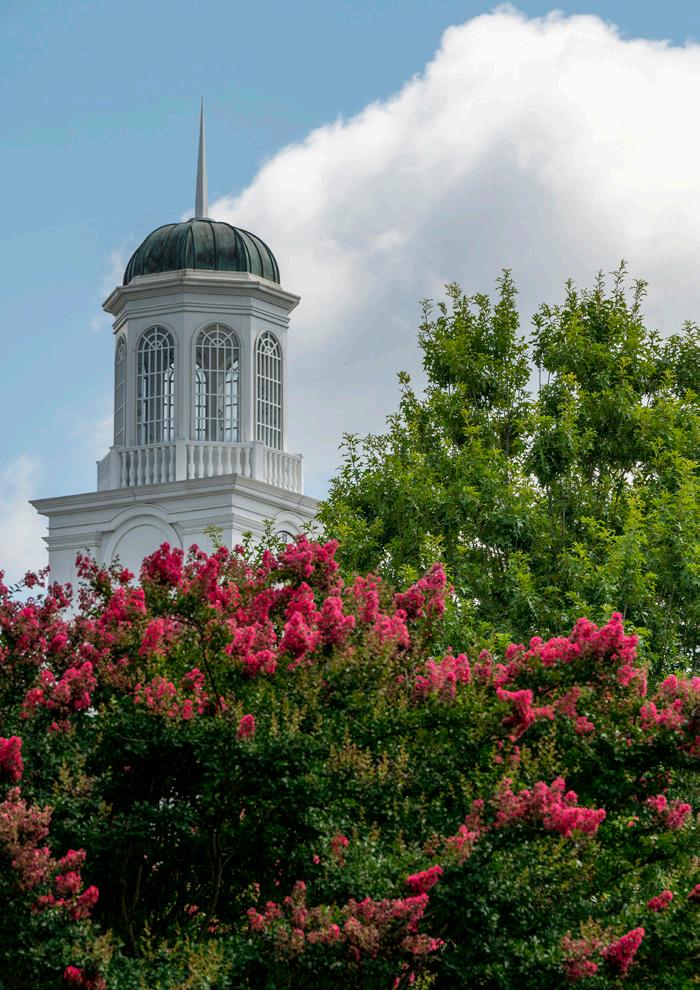
“It’s just been protests and conflict, it’s not been a conversation.”
could not name examples of when actual community discussion takes place. A leader told us: “It starts with the fact that we’re not doing a good job of having forums available for people to speak at. Doesn’t matter what you got to say. If there’s nowhere to say it, it’s just not going to get said. It’s not going to be heard.” Another said, “Other than just at the country store or across the fence at the backyard, there’s no real public place where people can come and say what they want to say or hear what’s being said.”
Conversations happen “door-to-door and with other people that are like-minded.”
Some organizations are organizing conversations with particular segments of the community. LatinxEd is “going around interviewing different people in the community to see what’s working, what’s not. It’s through those sorts of conversations that we begin to elevate the Latinx voice, to have discussions around some of these issues that affect the population,” according to a leader. Other organizations across the county, including Healthy Alamance, Alamance Achieves, and others, have made similar efforts.
The same people show up. “It’s not enough for the same 20 people to keep on coming,” a resident told us. “Plenty of voices aren’t heard,” is how a leader explained the challenge. “Plenty of people that aren’t at the table that need to be, and yet it’s really hard to get them there.” This is a reality we heard time and again.“People feel very separate and you’re never together,” another resident said. Many community members are focused on life circumstances, which can prevent them from being civically engaged. “If you’re poor, if you’re undocumented, if there’s not access to childcare, there’s not access to these other things, it just makes it harder,” a leader said.
Why bother? A resident from East Burlington is “tired of going to meetings and nothing ever happens.” There’s a widespread lack of faith in the county that community discussions will have any real impact. An Altamahaw Ossipee resident shared, “The things that would make systemic changes in the community, those conversations almost never happen. If they do, I don’t think they’re going anywhere.” Many residents and leaders don’t feel their voices matter. “There’s a preconceived notion that the powers that be are going to do what they want to do anyway,” a pastor said. Another leader thinks many conversations are merely “for show.”
Many residents and leaders don’t feel their voices matter.
And another believes, “What really discourages people is they don’t see any real, tangible change.” Indeed, one leader said, “I just got tired of feeling like I was fighting a losing battle.” A Mebane resident summed up a lot of people’s views about engaging in this way: “Why bother?”
There’s rampant fear and little trust When asked why people choose not to engage, here’s how one resident plainly put it: ”Fear. I don’t know you so I don’t trust you. You probably have an agenda. I can’t trust your motive, are you trying to take advantage of me?” Making a comment in public in Alamance can “be intimidating to the point that people who wanted to comment felt uneasy about doing it,” another said. A leader provided more context: “Discussions that really get to issues are nerveracking because you don’t have trust yet. You don’t have that relationship yet.”
Another added, “Unless they’re already in a safe spot and they have that trust with someone, I don’t know that they’re just going and sharing openly.” People fear that if they speak up, then they will

be penalized. A leader told us, “People are afraid to speak up. If you speak up, you’re a target.”
Conversations just shut down. A community leader said, “When you raise an issue, how is it received? If it’s received as a complaint, it’s either going to be fight or flight. I’m either going to fight you or I’m going to say, ‘That’s just more of the same. I quit, I give up.’” A resident lamented that a fundamental “lack of understanding” exists among people in Alamance. “We can sit around the table and everyone can have their own perception about what they see, and not understand what’s going on on that other side.” The question is how to bridge such divides? As one leader
told us: “You say something you think is being received one way, and people receive it another way. That just sparks either debate outside of the subject matter, or people start complaining, groaning or moaning about things that basically are really off topic.” A Graham resident shared, as noted earlier, “Whenever we try to have a conversation about race, that gets shut down. They say, ‘We’re not racist.’” And a leader told us, “People are unable to receive information productively. Like if there was the racial equity stuff, people I know would get up and walk out. They’d be like, ‘I’m not listening to this. This is a Democrat agenda. This is propaganda. I’m leaving.’”
“You probably have an agenda. I can’t trust your motive. Are you trying to take advantage of me?”
There’s a need for more know-how to engage people. “There’s a genuine desire to understand, but maybe not really knowing how to get there,” said one leader when speaking about what is required to create more meaningful and productive community conversations in Alamance. Organizations and leaders across the county struggle with just how to engage people. “Who brings people together for a conversation matters,” a leader probed, “and who has the ability to keep the conversation moving forward in a way that is respectful and productive. It’s really hard to figure out.” Another added, “People are really struggling to figure out how to create those forums that people are interested in coming to.”
Conversations are inaccessible to many people. Currently, there are “plenty of voices that aren’t heard, plenty of people that aren’t at the table that need to be, and yet it’s really hard to get them there,” stated one leader. Another explained why, saying, “Many may have children, so they’re taking care of families, working multiple jobs…A session like this may be inaccessible for them. Any kind of way that you can help maybe incentivize or provide some of that additional care that is needed, that always helps.” People said that enhancing the accessibility of conversations should be a primary concern for organizations. A resident shared that various levels of marketing are important because “everybody’s not on Facebook, so social media might not work.”


Common community norms for public life help to guide how people act individually, interact, and work together. These norms set the standards and tone for public life and engagement.
Residents care deeply about their neighbors. “I have a sister who lives in Virginia Beach. When she comes to visit, it amazes her how nice people are here. It just kind of blows her mind that people look after each other,” a West Burlington resident shared. The culture of Alamance County is that “people care about each other,” as a leader told us. It’s an important norm of the community. “When one suffers, we all suffer. When one is hurting, we’re all hurting,” a Graham resident said. “I could not pay for neighbors like these.” Another
“I could not pay for neighbors like these.”
Graham resident added: “The reason why I haven’t left is because I’ve had nothing but great neighbors who have been so generous.”
People keep to their close circles. “You have your circle,” an Eli Whitney/ Snow Camp resident said. “The folks outside of that circle, you just don’t really know them.” People throughout the county tend to stick to their immediate families and friends. A leader observed, “A lot of times people are so wrapped up with what’s going on with their families and extended families that maybe that’s as far as they look.” In Pleasant Grove, a resident said the prevailing approach in Alamance is, “I’m doing
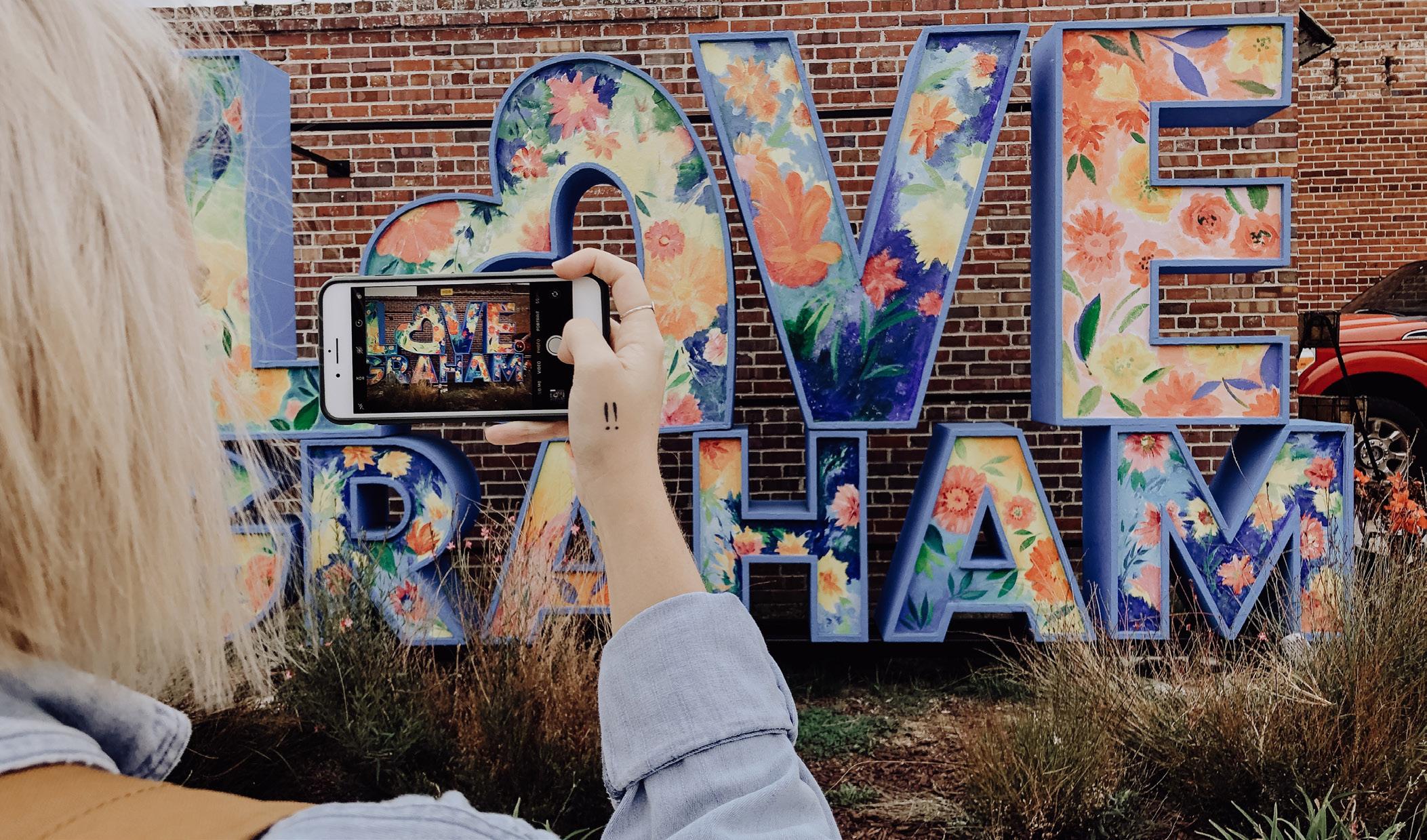
good, no issue right here. I’m fine,” and about others, they said, “I don’t need to know anything.” Indeed, people’s line of sight is often fixed on those in their close circle.
Wider fear and mistrust is pervasive. Over and over again, the word used to describe what drives broader relationships and interactions beyond people’s close-knit circles is “fear.” And fear and mistrust go hand in hand. “I don’t think there’s trust in the community,” an East Burlington resident said. “Can I speak out?” asked a Saxapahaw resident. “Am I going to get stopped? Is it safe in my neighborhood?” A Mebane resident
explained that people are “afraid that there is going to be some repercussions against them if they speak out.” A fear of law enforcement is prevalent in much of the county. “I don’t know if I’m going to be the next Black person to be killed by a White person,” said a resident. There is a resistance to new ideas. “Progress is being made,” one leader said, “but there is that resistance of still trying to go back to what people are comfortable with. They want to go back to the 1950s, when other people were in charge.” An East Burlington resident, quoted earlier, put it this way: “My view of Alamance County is that those who are in power are afraid of
change, and they view it as something very threatening because it’s something different.” And another leader said that the resistance to change is “because you’ve done something the same way, it’s hard to believe that it could be done differently.” At every turn, people spoke about a norm of resistance within the county that shapes how people interact.
Some people are looking for ways to connect with others. A clear thread throughout this report is a desire among many people in the county to find ways to connect with each other. In this way, this is perhaps an aspirational norm.
An East Burlington resident said, “We need to learn to be a village.” And in Mebane, a resident there said, “If we could get to each other, we’d see each other and we’d foster more of a sense of community.” While this is happening in some arenas, it’s not happening enough; as this East Burlington resident put it: “People are definitely trying to make it happen. It’s just not enough people.”
“Things are fine the way they are.” One reason people remain in their close circles is that they like it that way; they’re satisfied with their lives. “They’re happy with the way things are,” one leader explained. “They’re busy, they’re doing other things.” Indeed, some people told us they have no desire to make changes either in their lives or in their
particular communities. A Southern Alamance resident struck a familiar chord, saying, “Don’t bring your rules to change our neighborhood. We like our neighborhood the way it is.” A leader told us that “there are still a lot of people in this county who think things are just fine the way they are.”
People fear being manipulated. Another reason why people may stay within their close circles, and why fear is such a prevalent norm, is a concern that they “might be manipulated” by others outside their circles and there may be a “hidden agenda,” as one leader explained. Leery of being unduly influenced by others seeking to push their views, people feel suspicious: “You probably have an agenda. I can’t trust your motive. Are you trying to take advantage of me?” This leader said that when people hear certain ideas, or words like “community,” “that’s code to them.” Their fear: “You don’t want to get to know me. You don’t want to have a conversation with me. You want to tell me about you and how to be like you.”
People don’t know each other. One leader said, “I just don’t think we know each other,” and instead, “we talk at each other.” A resident amplified this challenge: “You’re a new face, why should I listen to you? I don’t know you.” The problem is people don’t know each other outside of their close circles. One leader said it would benefit the county
if people did. “When you get to know somebody, guess what? Your barriers fall.” And in Southern Alamance, a resident said, “I would like to know if you’ve got a problem. But if I don’t know, I can’t do anything about it.” Yet the barriers to people getting to know each other are real and persistent. One leader explained, “There’s a big perception that a lot of people who have moved here aren’t really interested in engaging with the natives. The natives are hard to get to know. They don’t have a lot of time for new people either.”
Outside “politics” is invading. Current conditions of national and state politics are increasingly infiltrating Alamance County and shaping local norms. “We are being influenced by what’s happening across the nation: the polarization, the divisiveness, the meanness,” a pastor said. In Saxapahaw, a resident said: “We ought to be able to agree to disagree. But the national and state level examples that we have been given have caused us to degenerate into something worse.” And an elected leader spoke about how people are quick to interpret different arguments as being either Democratic or Republican, which immediately causes people to feel that someone is trying to persuade or push them into a corner. The result: people quickly take sides, leaving little room for finding common ground.
When communities have a shared sense of purpose, explicit messages exist about the community’s aspirations and about everyone heading toward a common goal—or at least trying to work at common goals.
People are pulling in different directions. Alamance County currently does not have a widespread sense of shared purpose. Instead, many people and groups are moving in different directions simultaneously. “I don’t think it’s always a shared common thought,” a leader said. Another observed that we’re not “pulling in the same direction.” There are consequences to this situation. “We tend to miss opportunities to put our personal needs behind us and come together to get some major problems handled,” a leader told us. And another said, “We lose focus on ‘my way or your way’ versus ‘let’s just get there.’” Missing from Alamance are people working with common cause. “The motivating factor is just being a healthy community,” is what one leader said is needed. For now, that is not part of the Alamance story.
Identity is rooted in local communities. A major challenge: “There’s not a lot of intersection between different communities, period,” a young person

told us. In the Pleasant Grove/Green Level conversation, one resident said, “The county is divided up,” and another added that “each township has its own identity.” The problem is that “if you don’t know where you belong, you have a confused identity.” These divisions also lead to the inability—or perhaps an unwillingness—to see and know people from other communities. “Quite honestly,” a Saxapahaw resident, who was quoted earlier, said, “I don’t know anything about what goes on on the other side of the river. I live on this side of the river.” A Mebane resident said, “When I think about where I live, I’m in Mebane,” and then added, “I’m a Mebanite! I do not take a lot of pride in Alamance County.” In Saxapahaw, a resident summed up the sentiment we heard across the county: “Countywide, I don’t feel like there’s a great sense of community.”
People want to get past divisions. While there is a missing sense of shared purpose in Alamance County, there is some expressed desire to move forward together. “Everybody is sick and tired of the arguing and fighting and acrimony between all the different groups, whether it’s political or other groups,” one leader said. As this report has documented, there are numerous dividing lines that beset Alamance; people want to get beyond them. “I understand you’ve got to carry a sign sometimes to get your point across, or
“Everybody is sick and tired of the arguing and fighting and acrimony between all the different groups.”
“If we stay on opposite sides of the room and we’re looking at each other with disdain and disgust or even worse, then how are we going to fix this?”
to get your picture in the news, but I’d rather just throw the signs down. Let’s get in a room and see if we can talk to each other and figure something out,” said a religious leader. One leader went so far as to say, “We’re at a breaking point. People are going to have to realize that everybody that’s White’s not bad, everybody that is Black is not bad. There are good and bad people in all races.” Indeed, another leader said, “If we stay on opposite sides of the room and we’re looking at each other with disdain and disgust or even worse, then how are we going to fix this?” For some people, it’s
time to move forward. Here’s how an East Burlington resident expressed the desire to get past divisions in the county: “If I’m not trying to work with anybody that’s right here around the table, then we’re cutting our own throat.”
Youth is one area where people want to come together. Throughout this report are possible areas where people could come together to create a shared purpose in taking action. One clear area is youth. “The need for our kids to have a strong start is universal,” an Altamahaw Ossipee resident said. In the
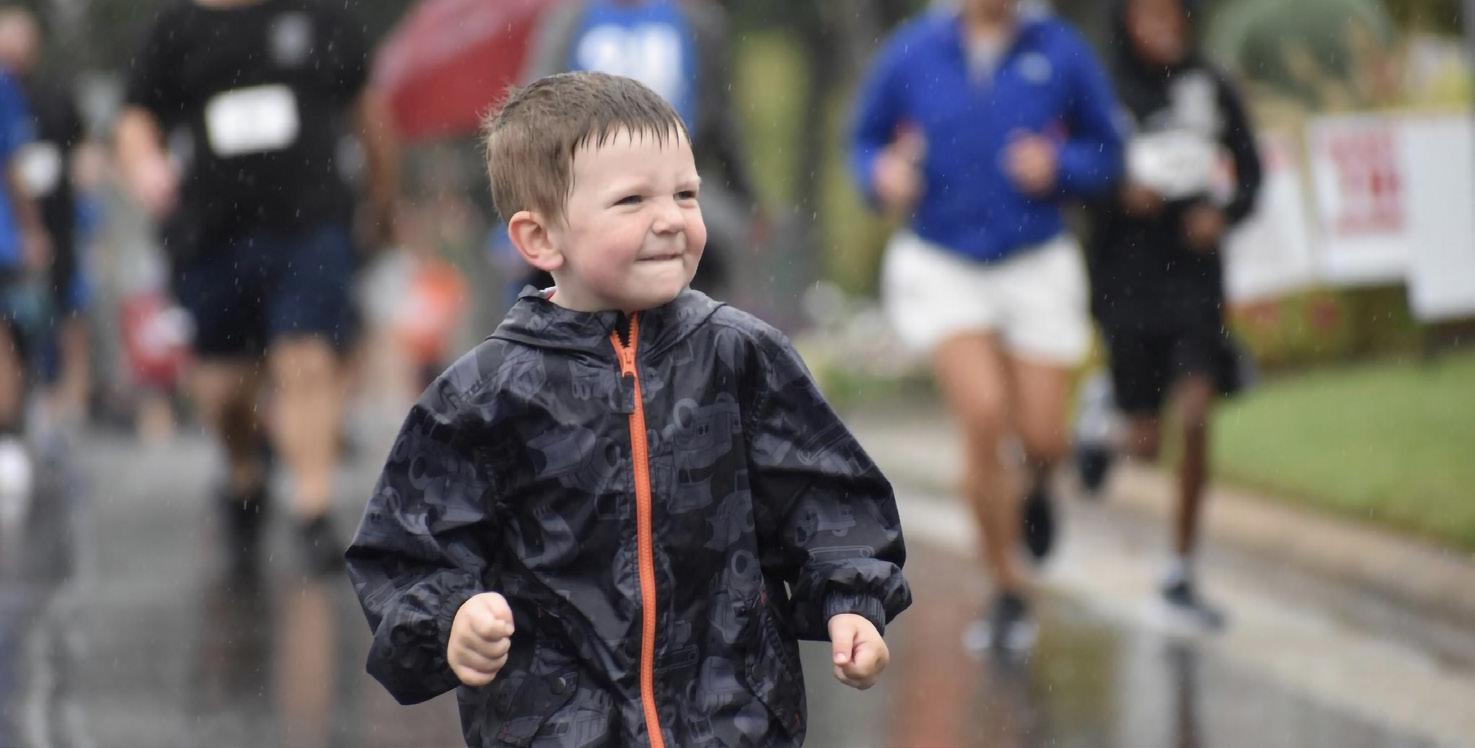
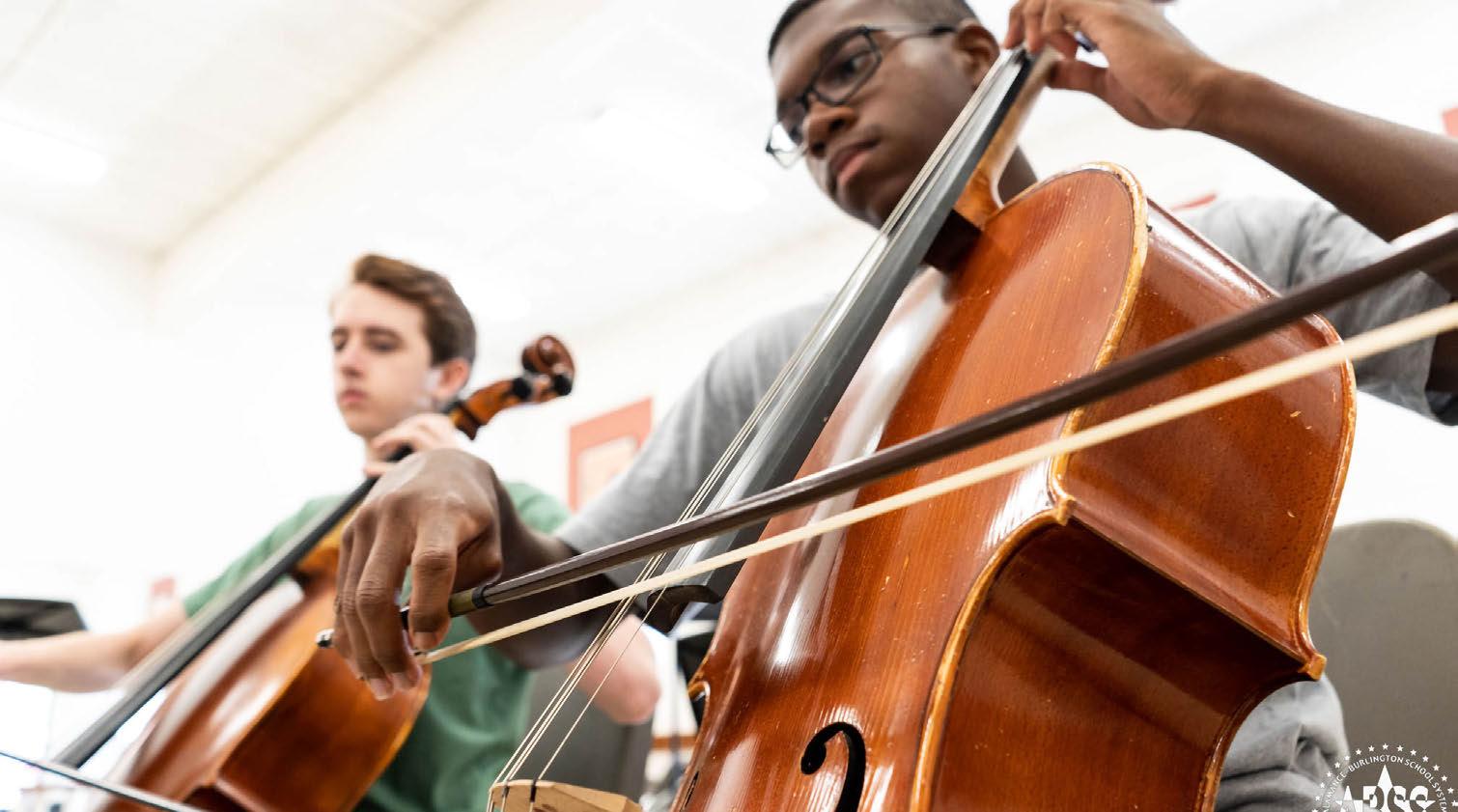
East Burlington Spanish conversation, a resident told us, “Our hopes are our children.” And a Southern Alamance resident said, “The majority of us want the best for our kids.” Youth may be one place where people can actually come together and start to forge a greater sense of shared purpose. “If you’ve got a child or a grandchild, you need to get involved. Children and grandchildren are a big motivator,” a leader pointed out. The universal nature of this perspective was summed up by this Southern Alamance resident: “Everybody in this county—I don’t care what sociodemographic you are—wants the best for the kids.” They then added, “Even if they don’t have kids.”
“Everybody in this county wants the best for the kids. Even if they don’t have kids.”
People don’t think they can win. There is a prevailing feeling throughout the county that attempts to create a sense of shared purpose will inevitably lead to winners and losers, and that many of the people we spoke with fear they will be on the losing end. One leader said it’s always “the most prominent voices” that are

pushing their point of view and “there’s never a ‘we as a community.’” Another said that to move forward, “Someone has to do something major to give people a feeling that it’s possible for them to win.” But, as we have documented elsewhere in this report, people hold little faith that their voices and views will be heard if “they don’t own a business or didn’t go to college or they didn’t specifically do something” that gains people’s attention.
People quickly shut each other down. This is a variation of a theme repeated throughout this report, but is vital to underscore here. People in Alamance say they continually focus on those things that separate them from one another, and that they need to exhibit more understanding and patience toward one another. “We tend to be very quick with, ‘He or she is different than I am,’ and I am very quick not to accept. I need more patience,” a Saxapahaw resident observed. In Altamahaw Ossipee, a resident there said the prevailing Alamance attitude is: “You’re either for us, or we hate you. It feels like that.” These impulses make it nearly impossible to forge any sense of shared purpose. Another Saxapahaw
resident said people need to engage with each other differently if there is to be any forward movement: “I need to give people more of an opportunity. I’m pretty quick to shut things down that I tend not to agree with.” An East Burlington resident summed up much of what we heard in these conversations, when they said, “We still need to do a lot more to try to bring it together with each other.”
There’s too little listening and followup action leading to widespread discouragement. A community’s sense of shared purpose is rooted in people believing that their concerns matter and they can see follow-up action; neither is happening in Alamance County, so people are discouraged and pull back from community efforts. A Graham resident said they are tired of hearing, “Oh, this will change. This will be different.” The reality? “Those things don’t happen.” A Southern Alamance resident said, “Nothing ever gets done. They’ll tell you over and over again that, ‘It’s happening, it’s happening, it’s happening.’ And then it never does!” A leader underscored this perspective,
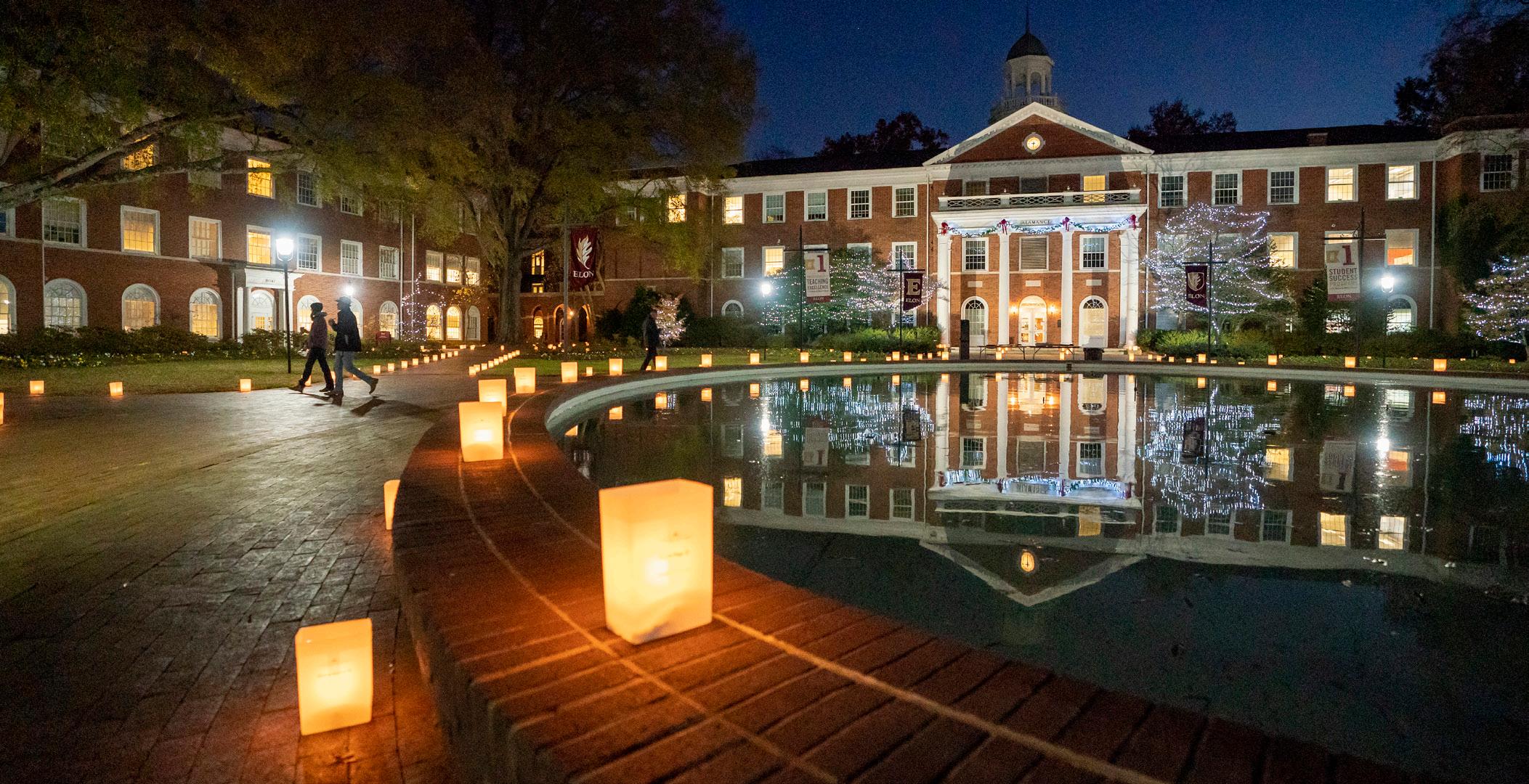
saying, “There’s discouragement based on efforts that have been tried in the past.” What people say is needed is greater listening, and then follow-up action. Here’s how one leader put it: “You have to create the environment where you’re intentionally going to listen and then act.” But there are hurdles that must be overcome. Another leader said we haven’t “figured out how to do effective outreach” to people throughout the county. And all too often those in power “just assume that this ‘change’ is what the community needs, and the community is like: ‘You actually didn’t ask.’ So we end up with stuff that’s not helpful,” a leader said.
Fragmentation blocks developing a shared purpose. Over and over, people told us how different individuals,
groups and organizations in Alamance County work in siloed ways. A resident in the Pleasant Grove/Green Level conversation said, “One reason people are not moving together is because people are working in isolation.” In a kind of call and response, a fellow conversation participant then responded: “Or silos!” A leader said that efforts in the county are “splintered to the point of ineffectiveness” and the result is “we may be over-resourcing some things and under-resourcing others.” Instead of working together, some want “branding, marketing, bragging rights” leading to a “lack of collaboration.” An East Burlington resident observed that “it’s very segmented in how we’re addressing problems” in communities and across the county.
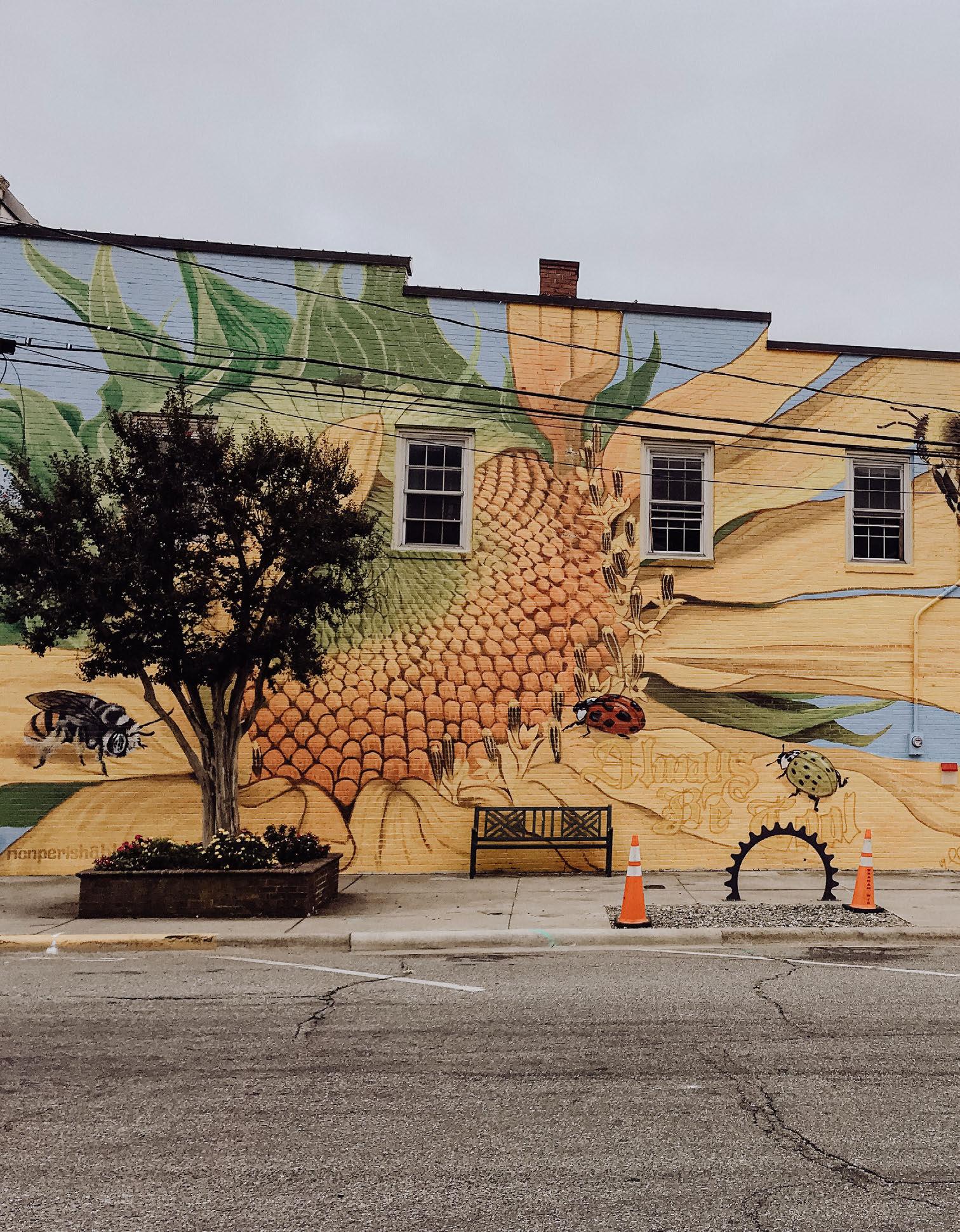
Alamance Choosing Hope is about how Alamance County can create a greater sense of possibility and hope for its people and its future. But let’s be clear: there is a difference between false hope and authentic hope. False hope is rooted in wishful thinking, setting unrealistic expectations, with a failure to deliver results. Authentic hope is based on addressing what really matters to people, and taking concrete actions that continually add up to a renewed sense of possibility and a growing belief in people’s ability to get things done together. To engender authentic hope, people must bridge divides, work to build a sense of shared purpose, and figure out how to move forward jointly.
To make this happen, it is critical that Alamance invests in and develops its civic capacities; otherwise, the community will remain stuck amid
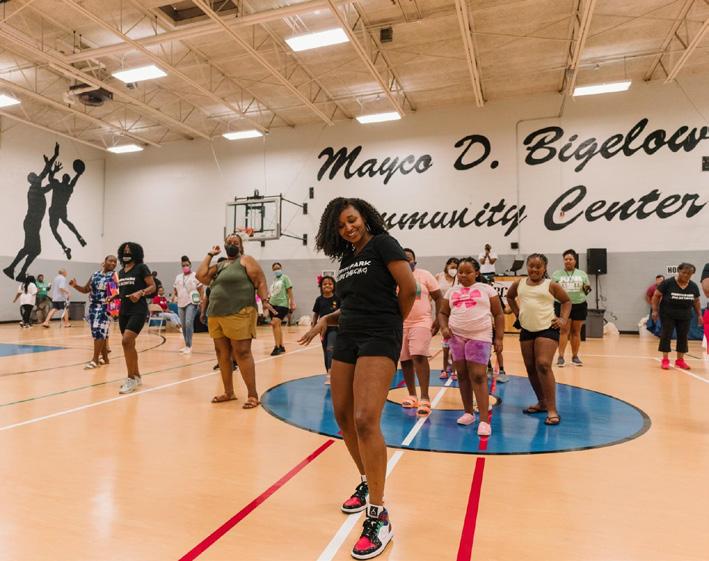
divisions, competing forces, mistrust and fear. In short, it will be unable to get on a more hopeful path. No single organization, leader, or group, alone, can make all of the necessary investments or do all the work. Different entities will invest funds, others will contribute knowledge and skills, and still others time and sweat equity. Each of these is necessary and important. This effort to invest in the civic strength of Alamance needs to be a shared community effort.
It is critical that Alamance invests in and develops its civic capacities; otherwise, the community will remain stuck amid divisions, competing forces, mistrust and fear.
Alamance County must cultivate leaders who hold a mindset of being turned outward, and who have the practices and skills to engage with communities and each other.
Investments should be made in such areas as:
– Engaging people authentically.
Throughout this report, residents and leaders said that more authentic conversations must take place in Alamance, and that there must be much stronger efforts to be inclusive of different voices and perspectives. Further, these conversations must create safe spaces for people to come together across real and perceived differences. Yet there is a gap in knowledge and skills in how to do this within the community.
Alamance County must intentionally invest in developing the capabilities of organizations, groups, leaders, and residents to engage community members authentically.
– Developing leaders who are turned outward.
Alamance County needs more leaders who have the community in their line of sight, who are focused on the shared aspirations and concerns
of all residents, and who will work across various dividing lines in the community. Today, there is a shortage of leaders with this orientation. Alamance County must cultivate leaders who hold a mindset of being turned outward, and who have the practices and skills to engage with communities and each other.
– Building more catalytic, boundaryspanning organizations and groups.
There are numerous organizations and groups that provide critical support services to the community; they should be lauded, and their work should be supported. And yet, leaders and residents alike report that there are not nearly enough organizations and groups that help to catalyze action, create a sense of common purpose, bring people and groups together across dividing lines, and marshal the shared resources of the community. Moreover, there is a need for such groups to be more attuned to the voices of the community, and to factor these voices into their

decision-making. All communities need such entities, and Alamance County is no exception. Building these organizations and groups is a critical area for intentional investment.
– Tapping the credibility and energy of the faith community.
Religious faith is a vital part of many people’s lives in Alamance County, and faith leaders and their institutions hold a special place in the community. But, according to residents, community leaders, and religious leaders, collective efforts by the faith community were once stronger. Now, there is a new opportunity for faith leaders and their institutions to spearhead sustainable change by coming together to help forge new pathways to move Alamance County forward. Intentional investments in such efforts need to be made.
– Generating a new can-do narrative. A community’s shared narrative shapes people’s mindset, attitudes, behaviors, and action. In Alamance today, people repeat an assortment of negative narratives that are now ingrained in the community. Some people have totally given up because they believe the narrative that no matter how hard they try, things will never change. Other people see farmland disappearing and unplanned growth creating chaos in the community, and believe that the community will inevitably lose its small town feel. Some people are so dismayed that they call the community “No Chance Alamance.” Still more think the community will only ever make the news for conflict and unceasing division. To get on a better path and begin to catalyze a chain reaction of positive actions,
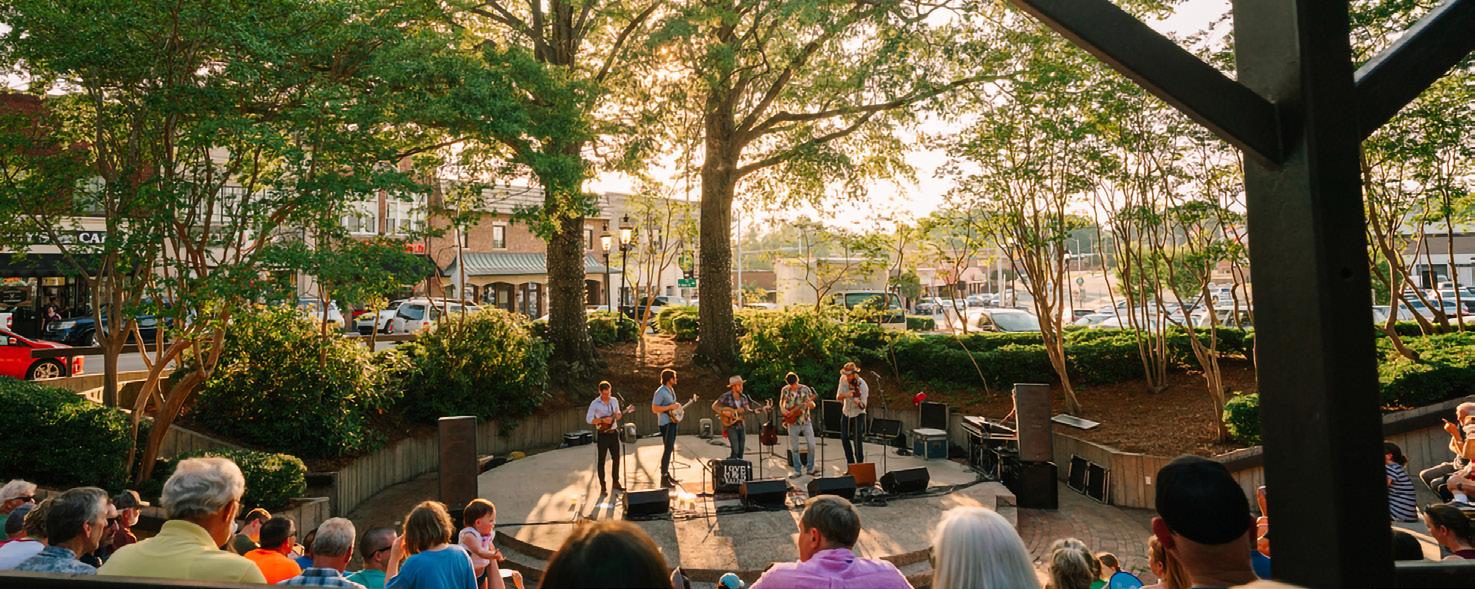
Alamance needs to intentionally invest in generating a can-do narrative about how it can move forward together. An authentic narrative can only be created by starting small, achieving real wins, and making those stories visible—all while continually developing the community’s ability to come together to figure out what should be done.
Communities can strengthen their civic capabilities through making intentional investments. These investments can be made alongside efforts focused on taking action on specific community concerns;
indeed, they are often most useful and effective when made in the context of getting things done.
Alamance finds itself at a significant juncture in its history; these investments are critical to its future. Alamance is a community beset by divisions, competing forces, mistrust and fear; simply taking a path of the status quo will only deepen these conditions. Alamance can choose an alternate path, one that creates a new trajectory for hope.
The good news is that solutions are here, in this community: Alamance has the power to choose hope.
An authentic narrative can only be created by starting small, achieving real wins, and making those stories visible.




